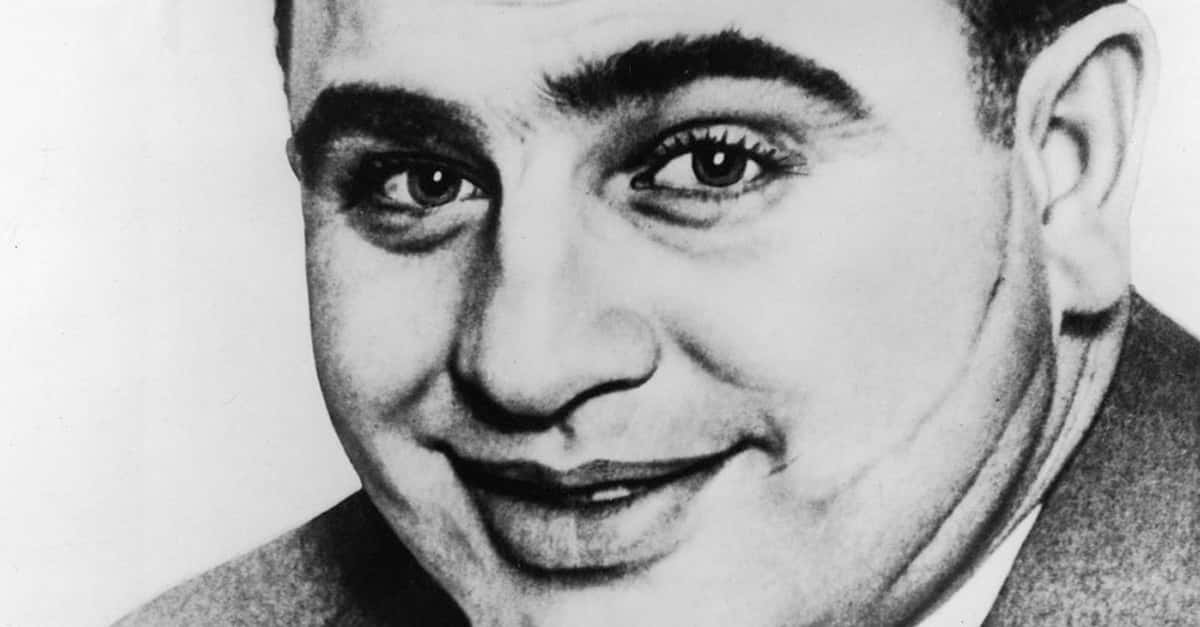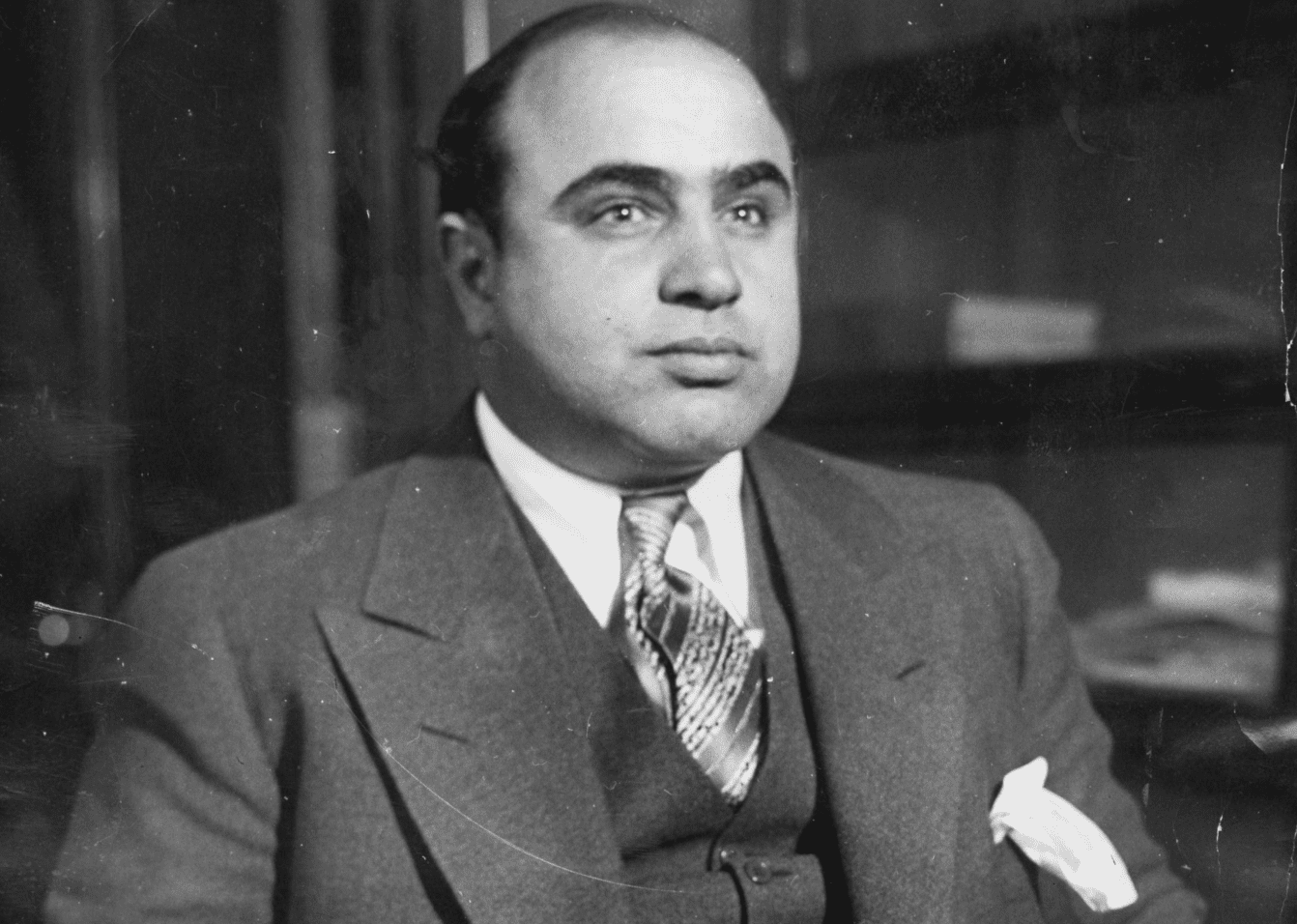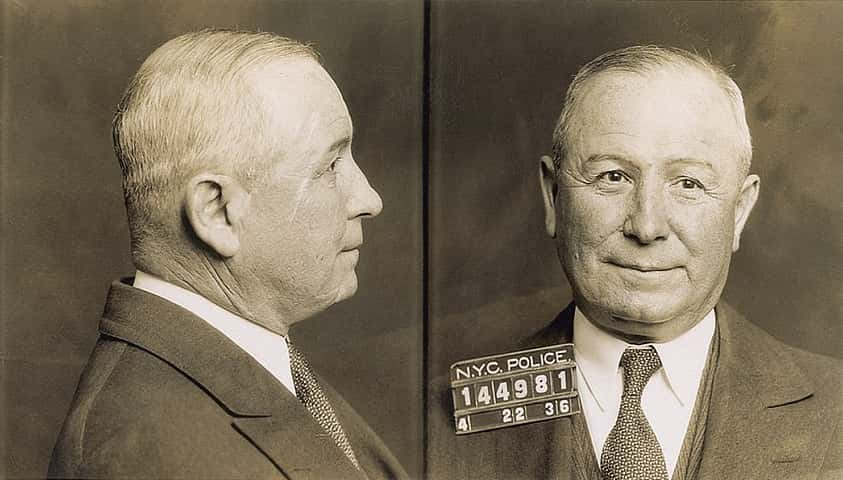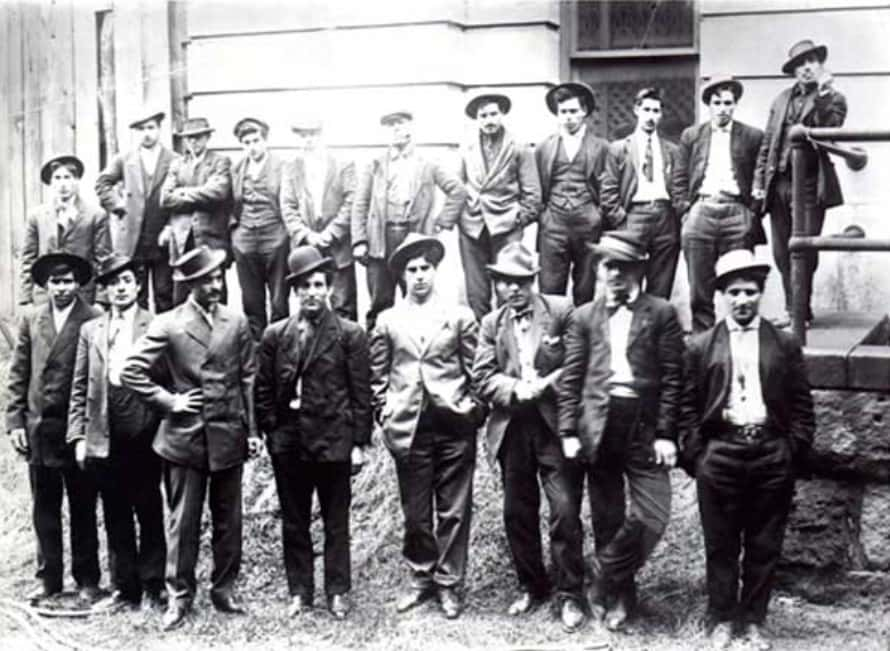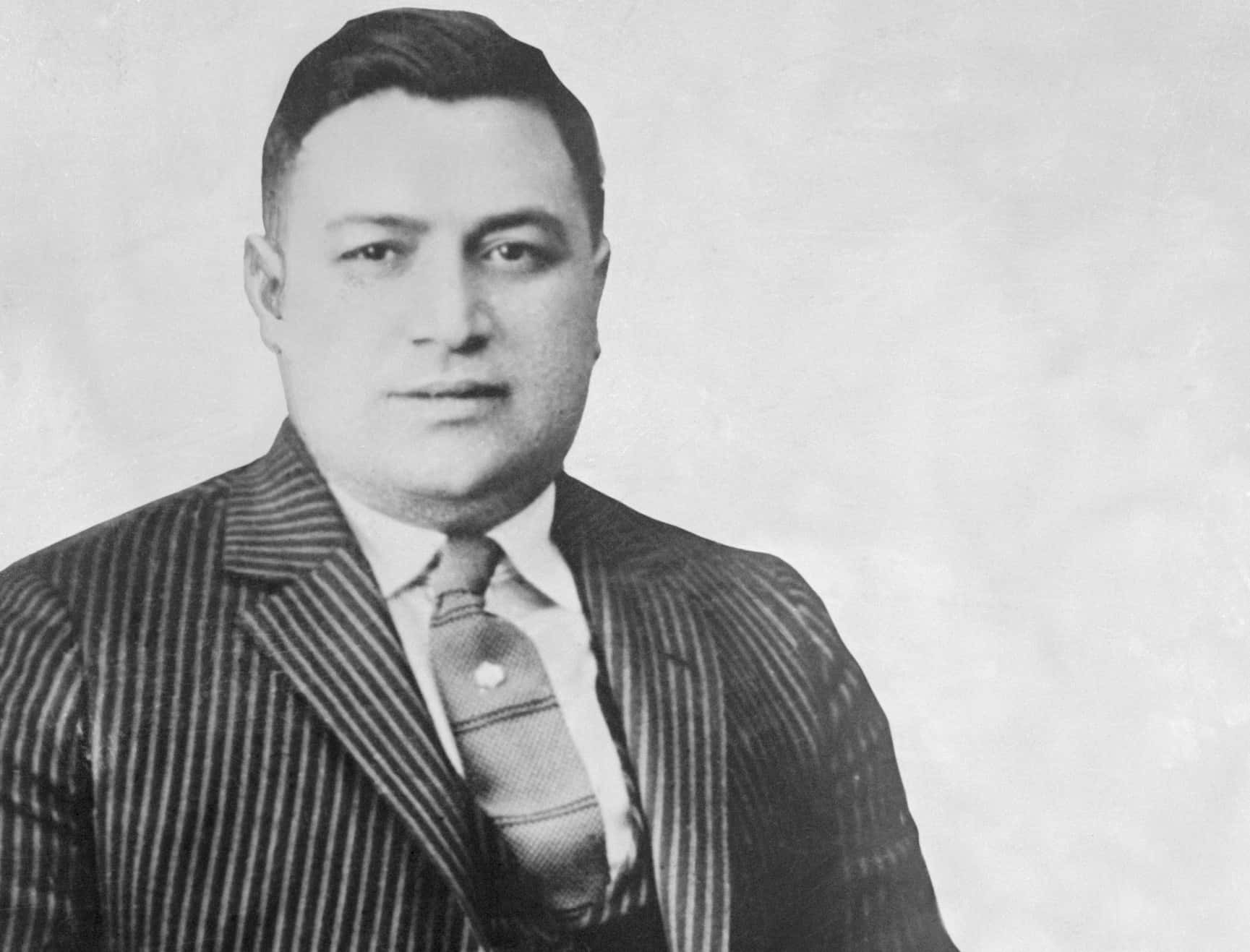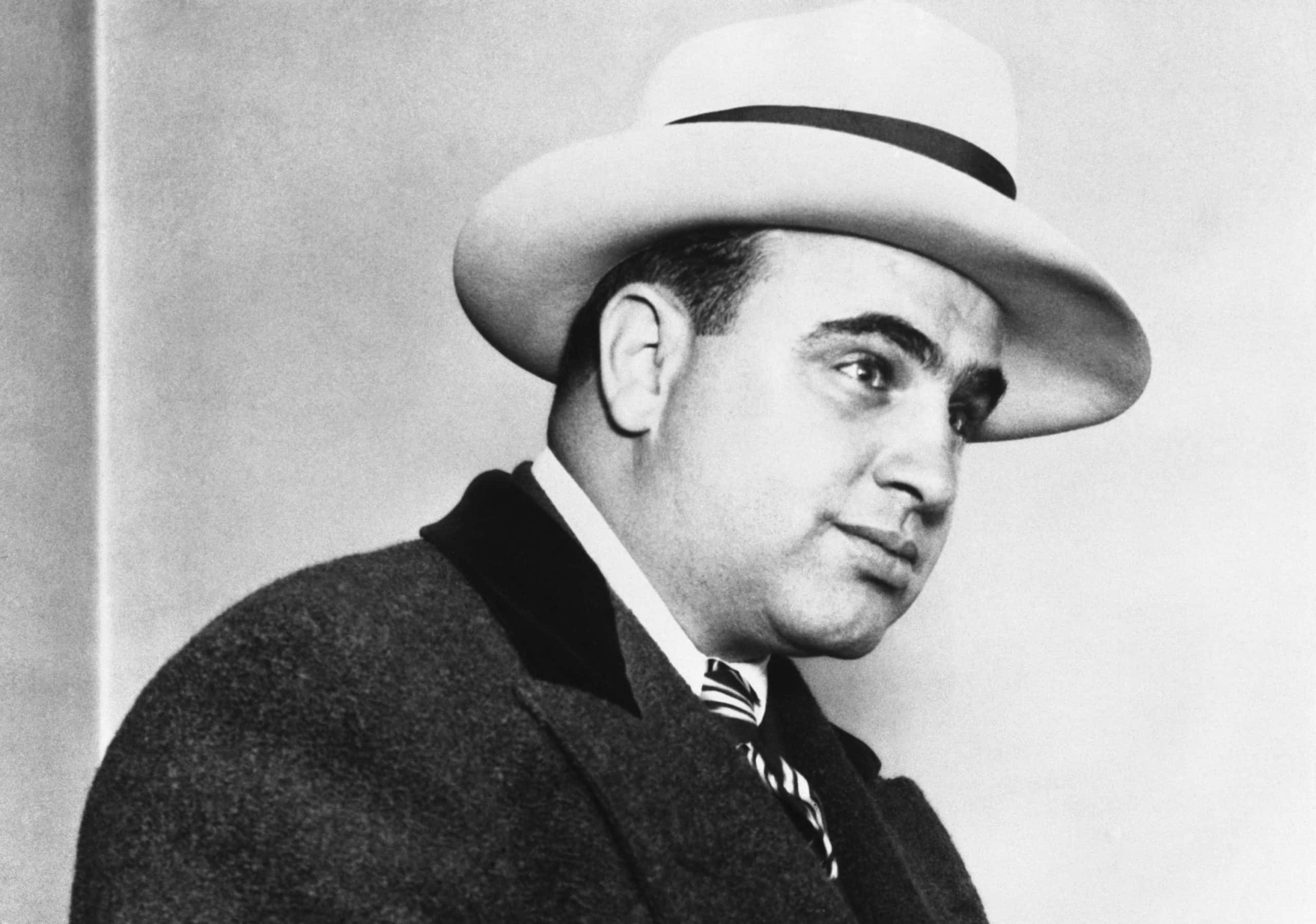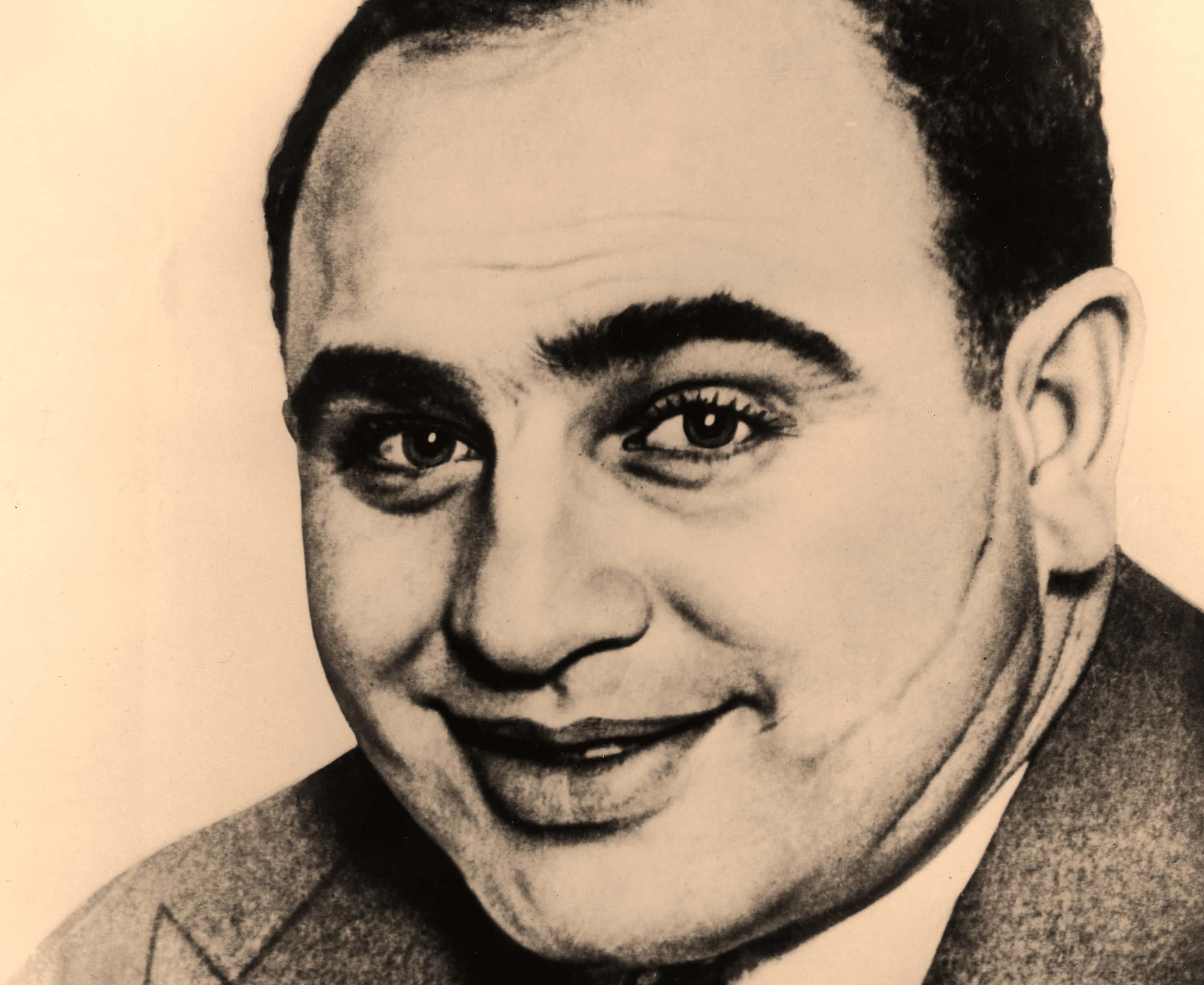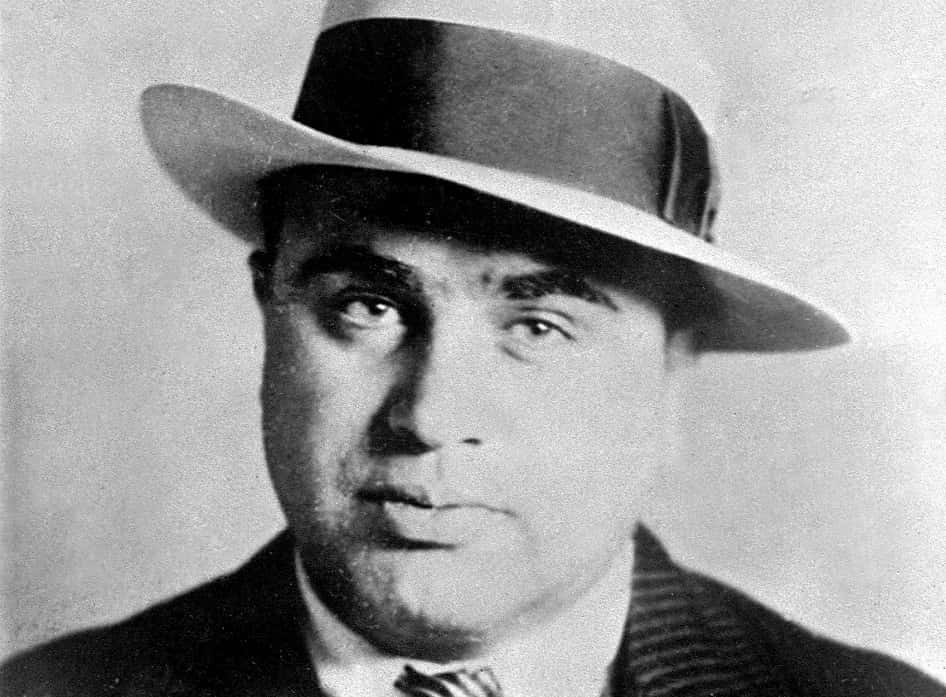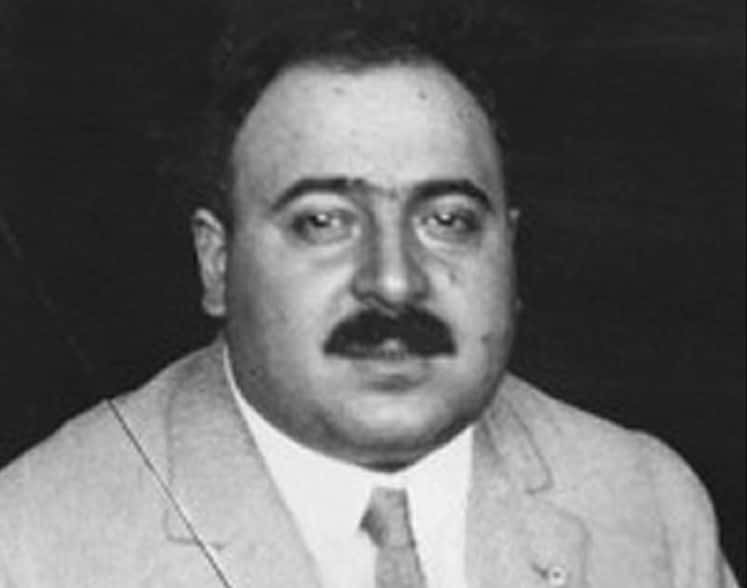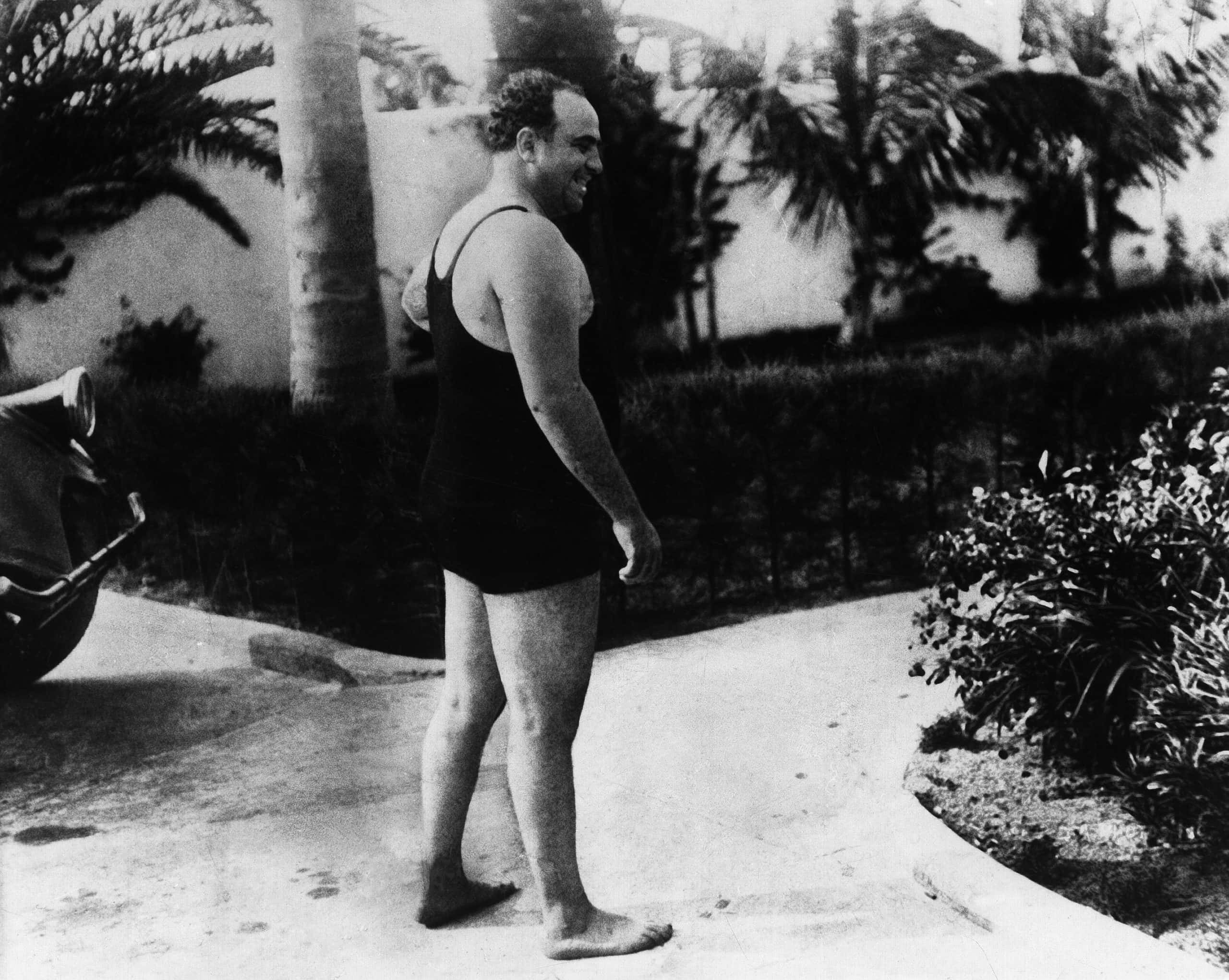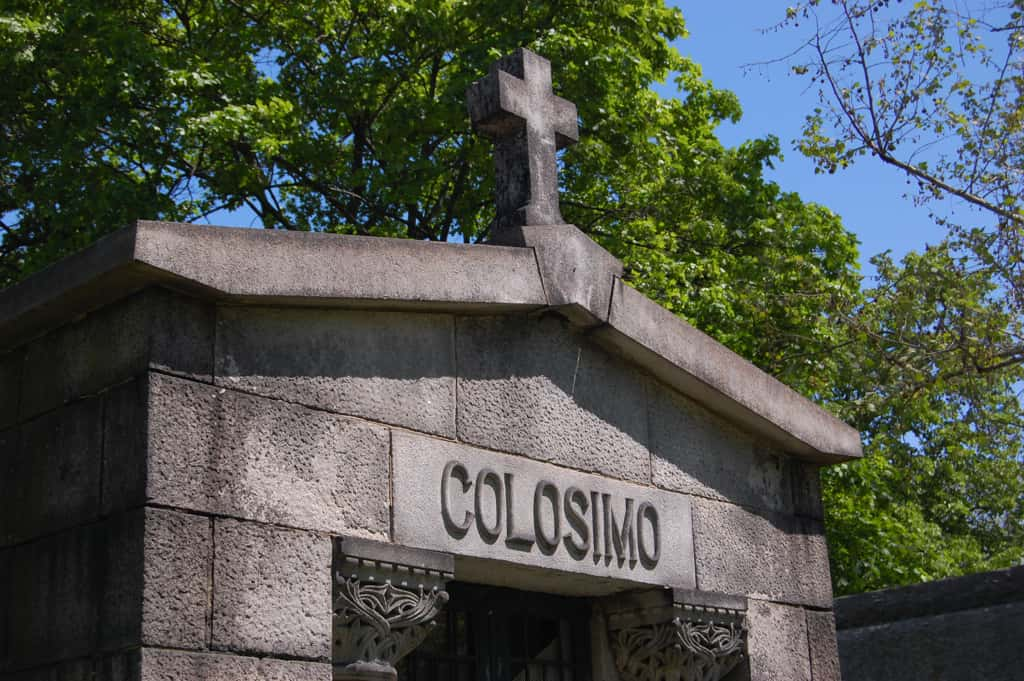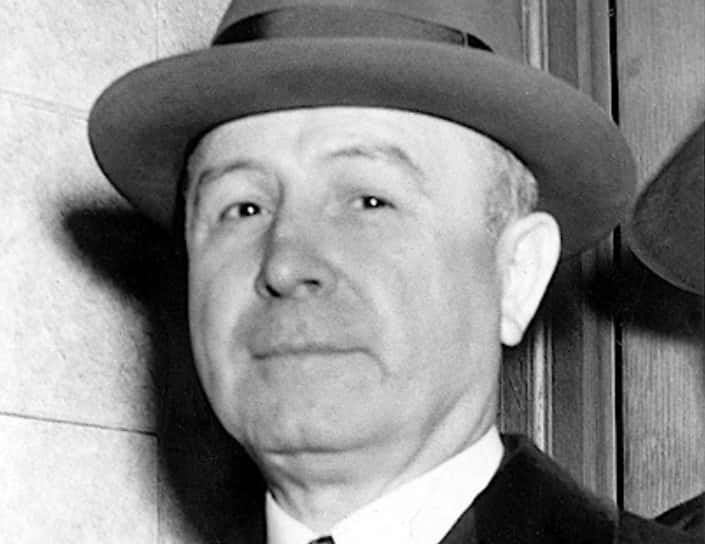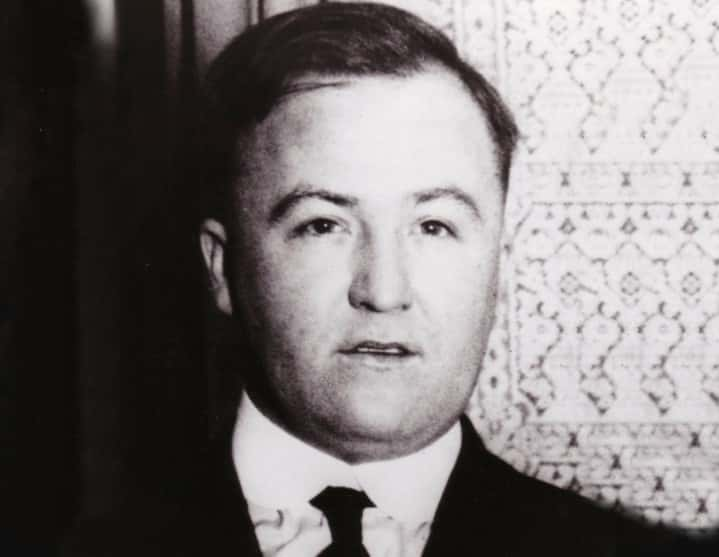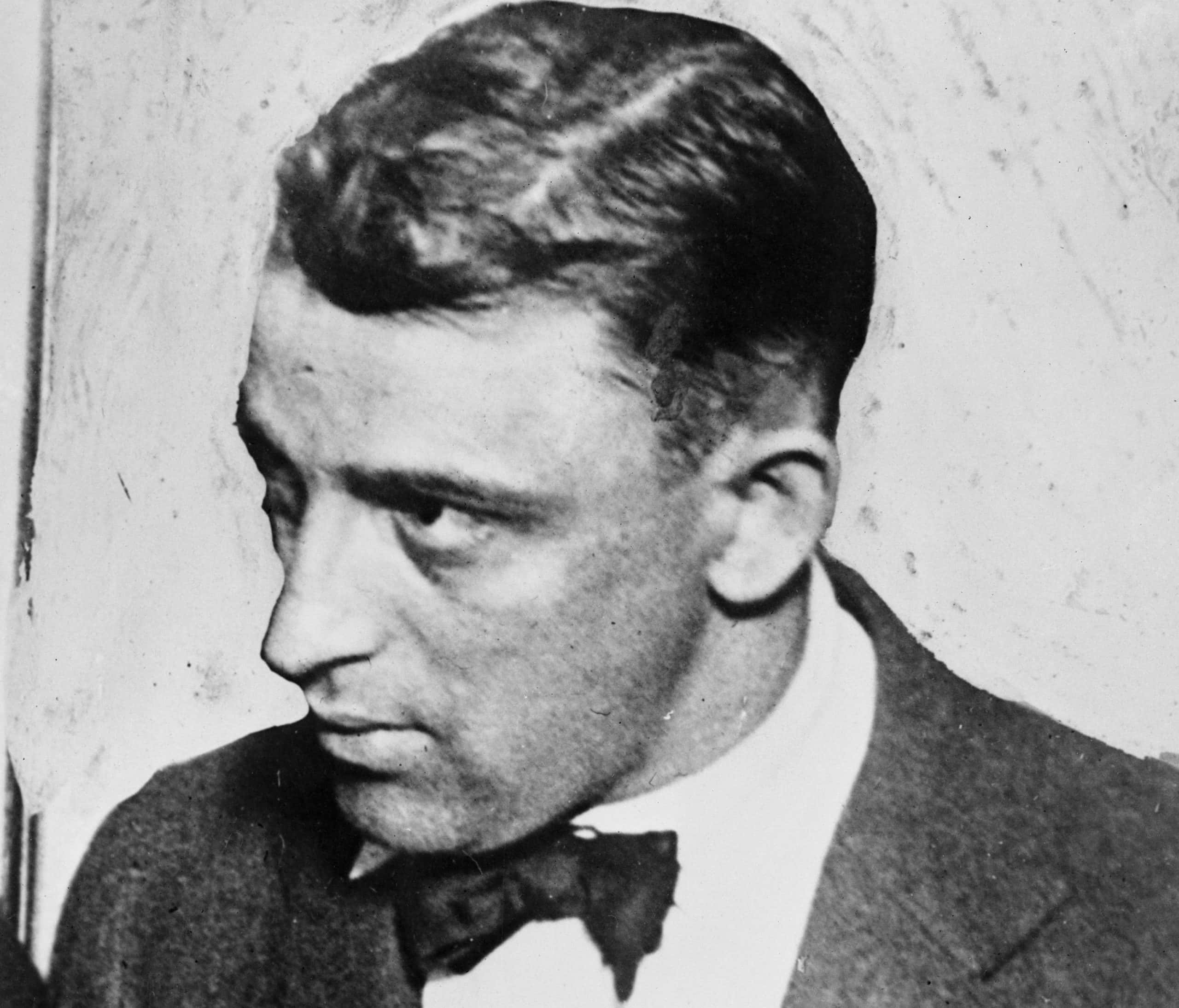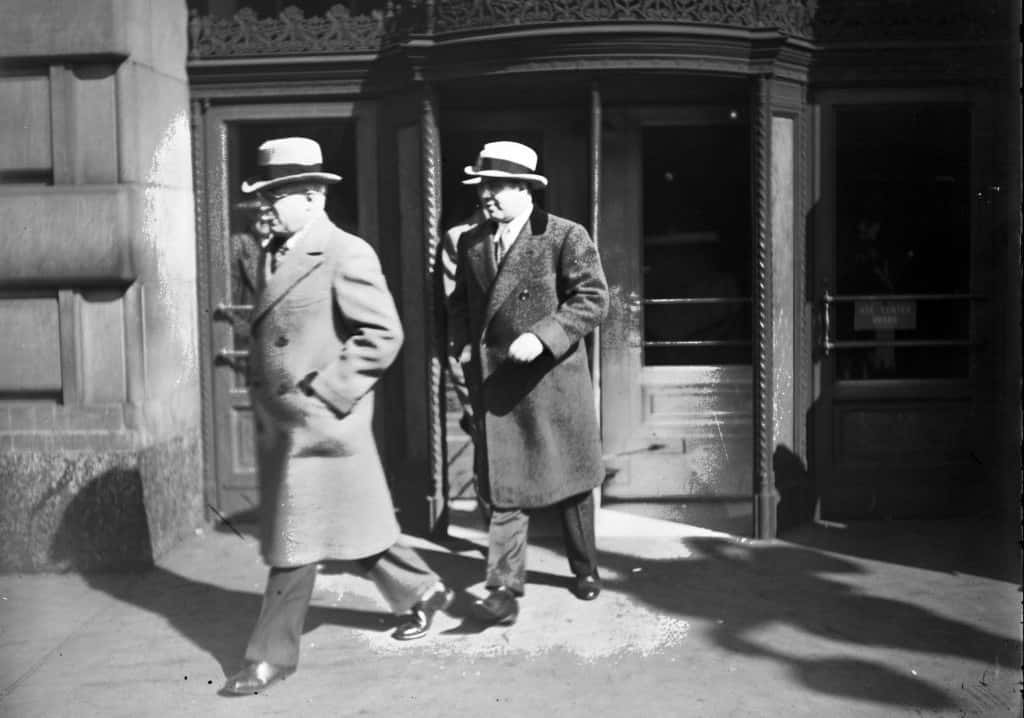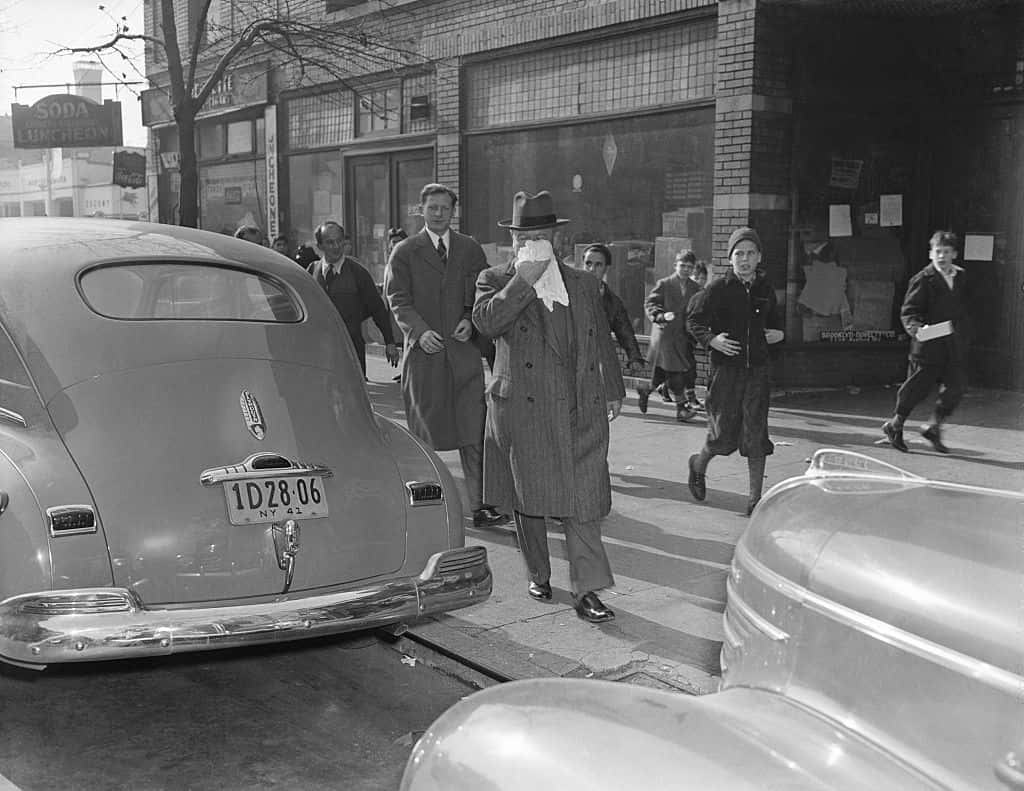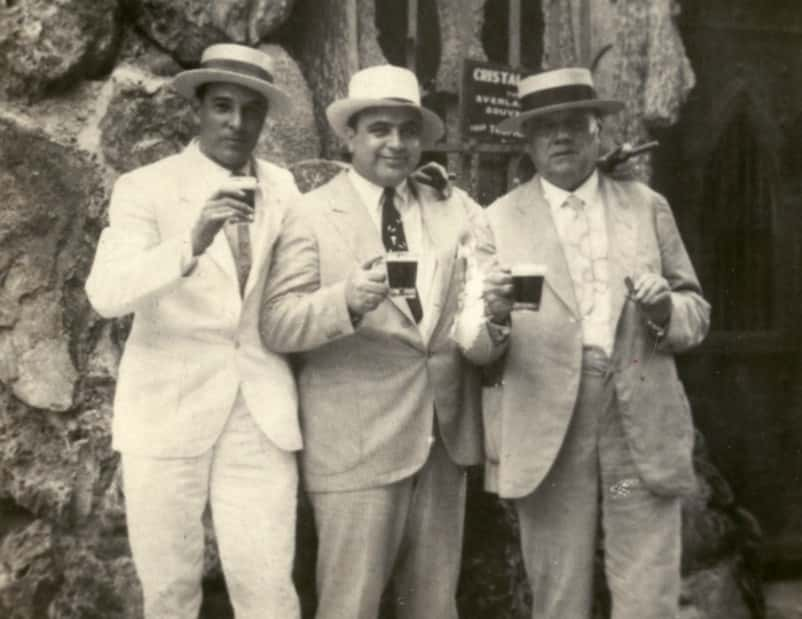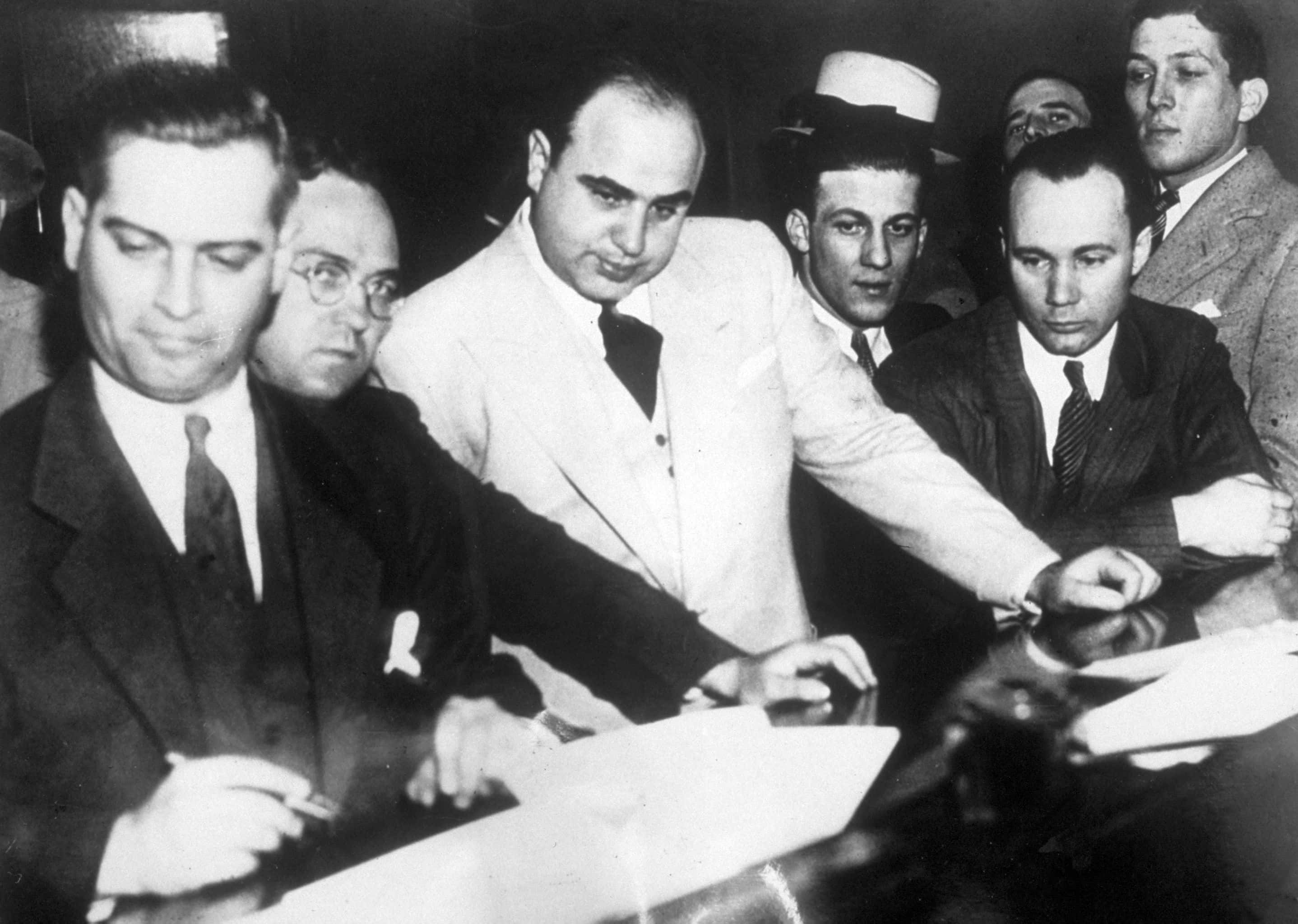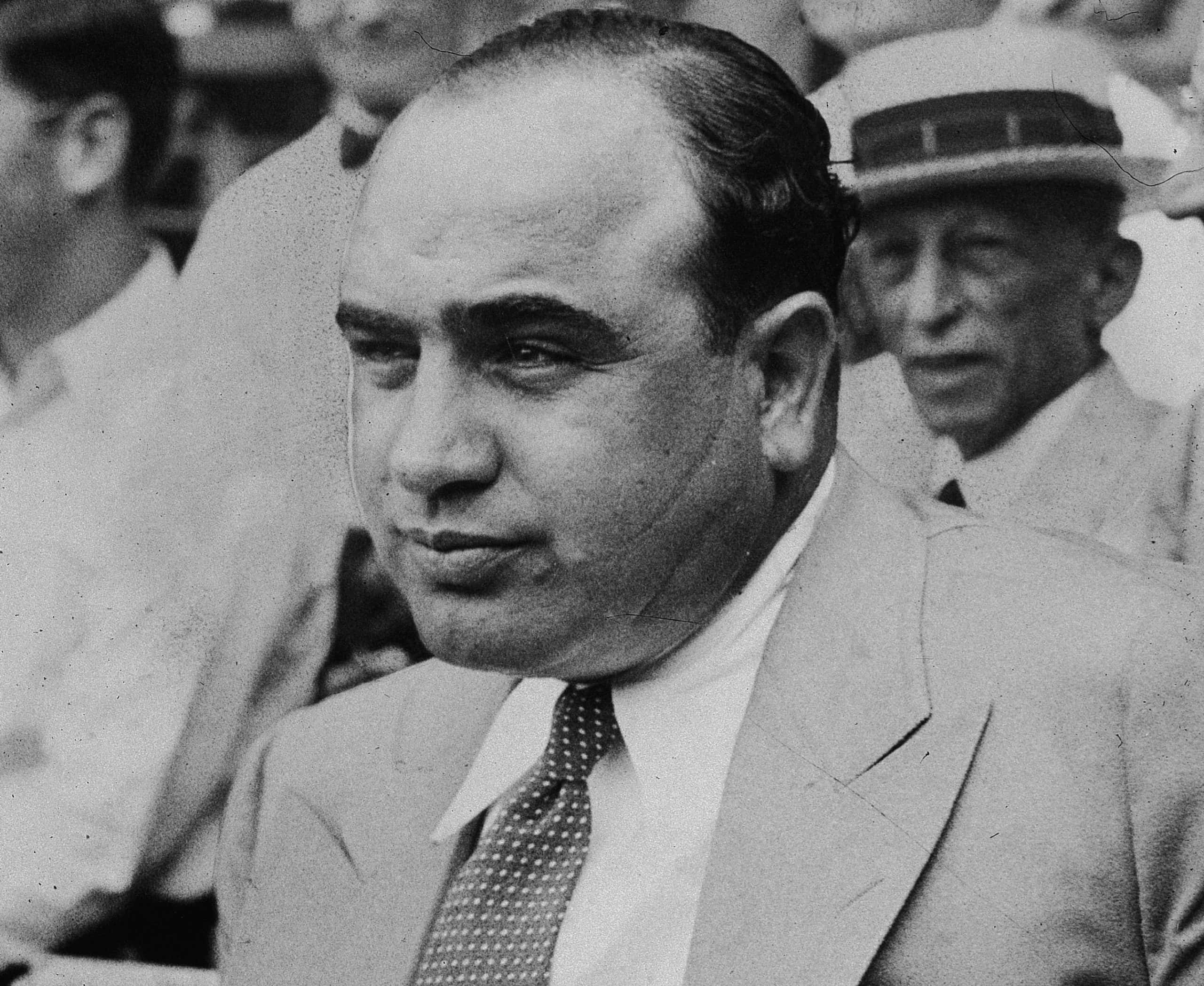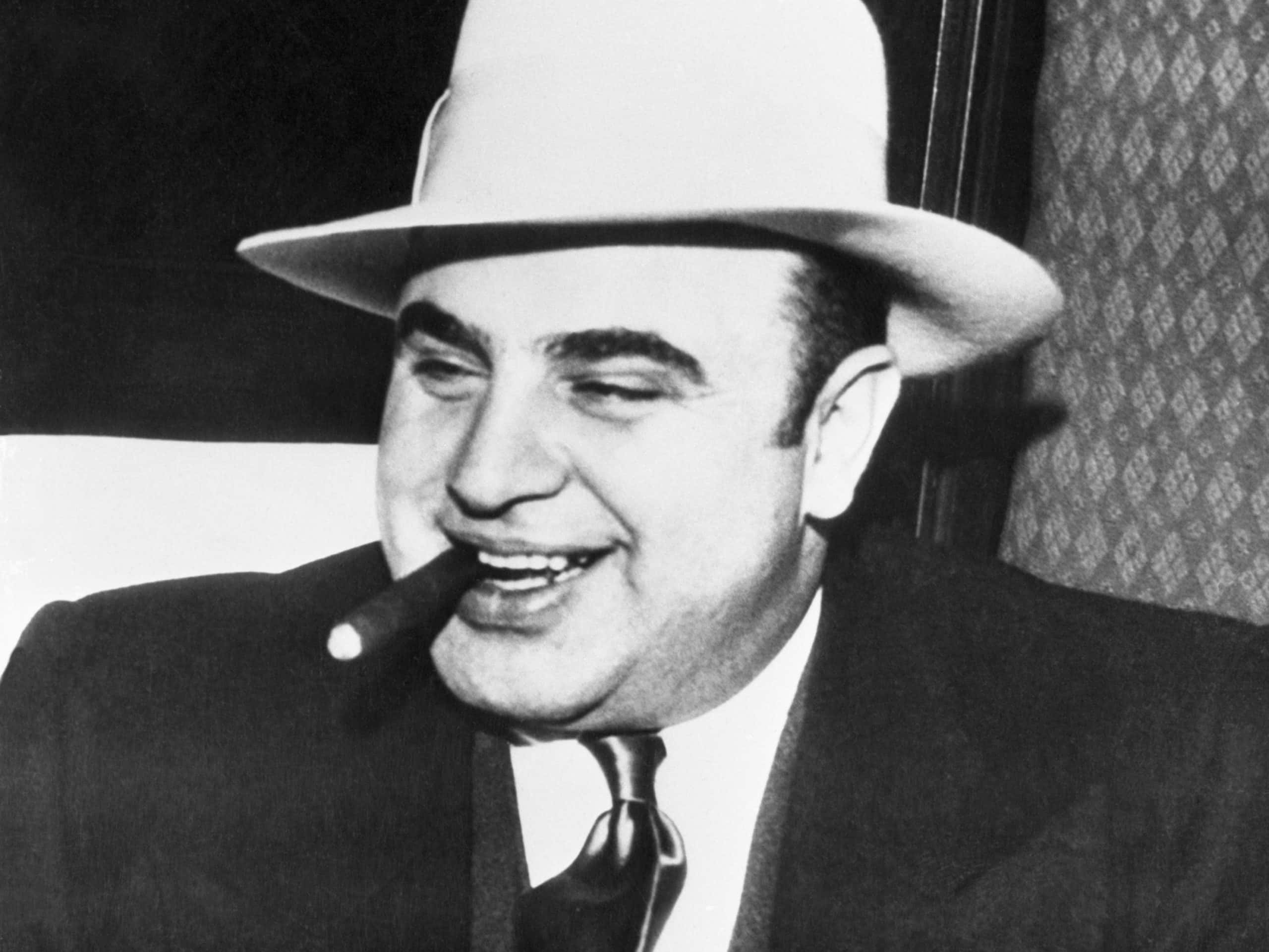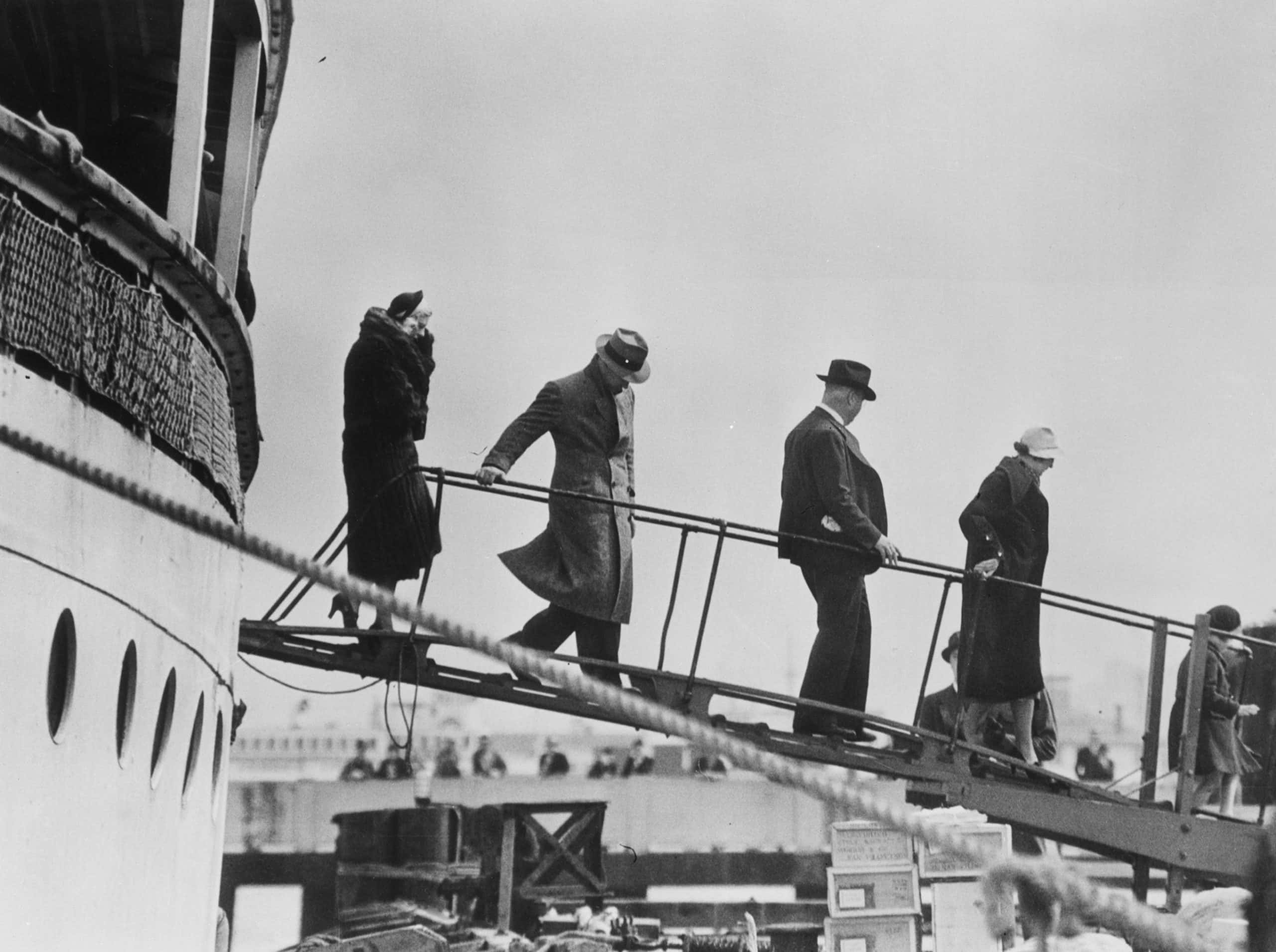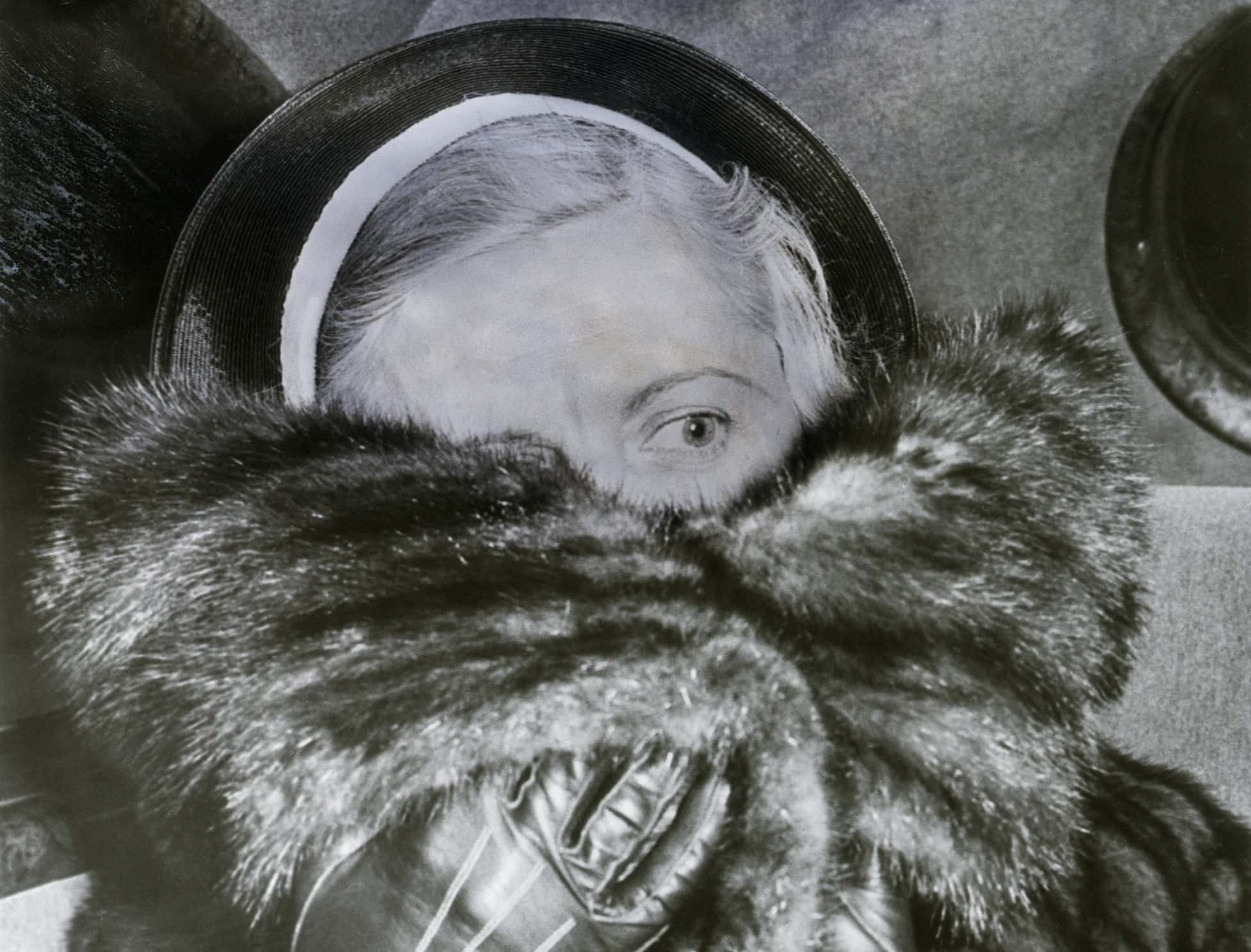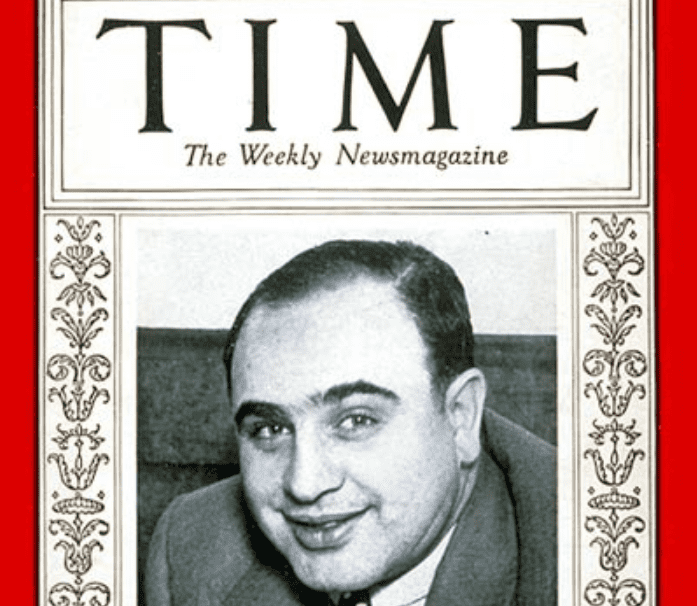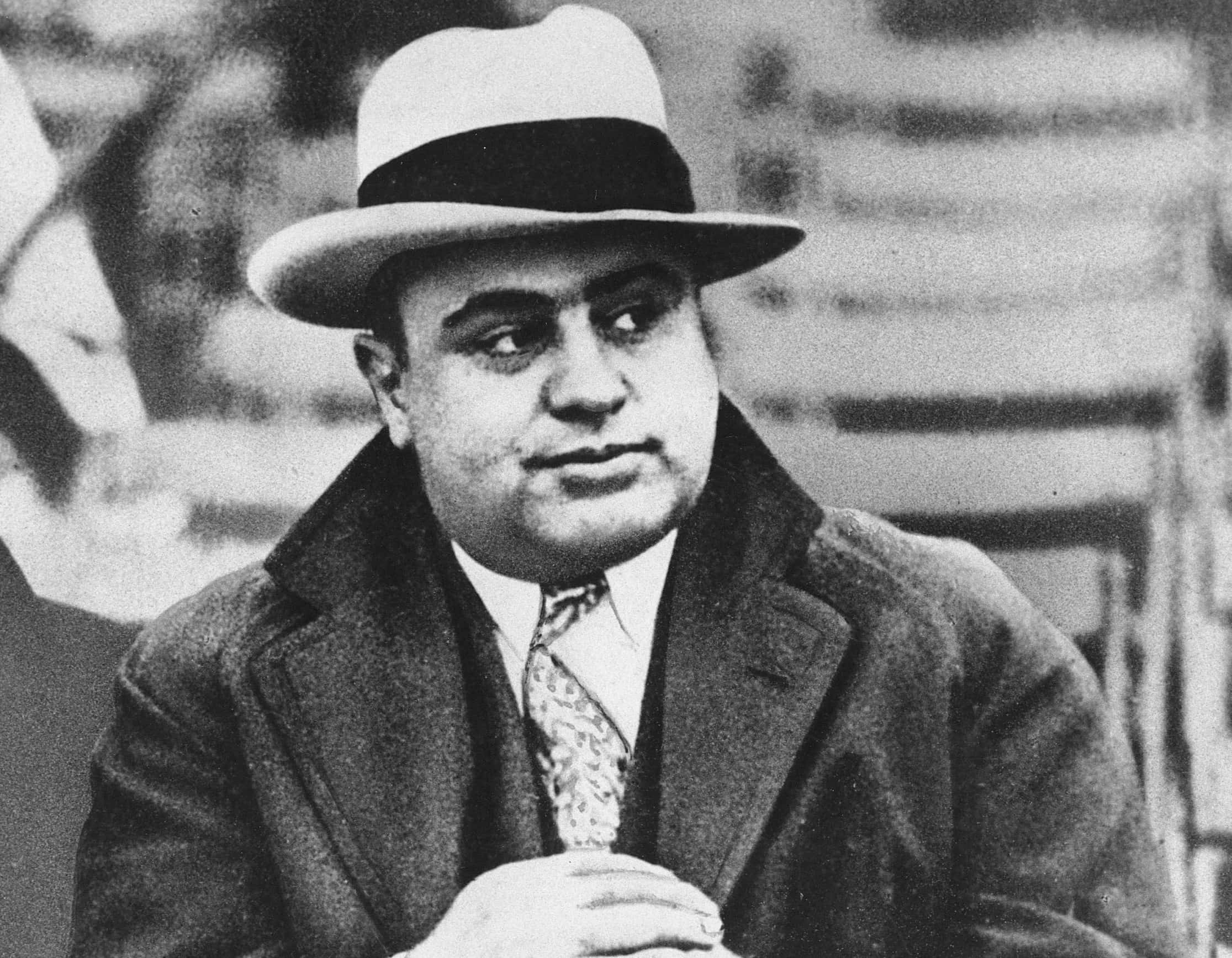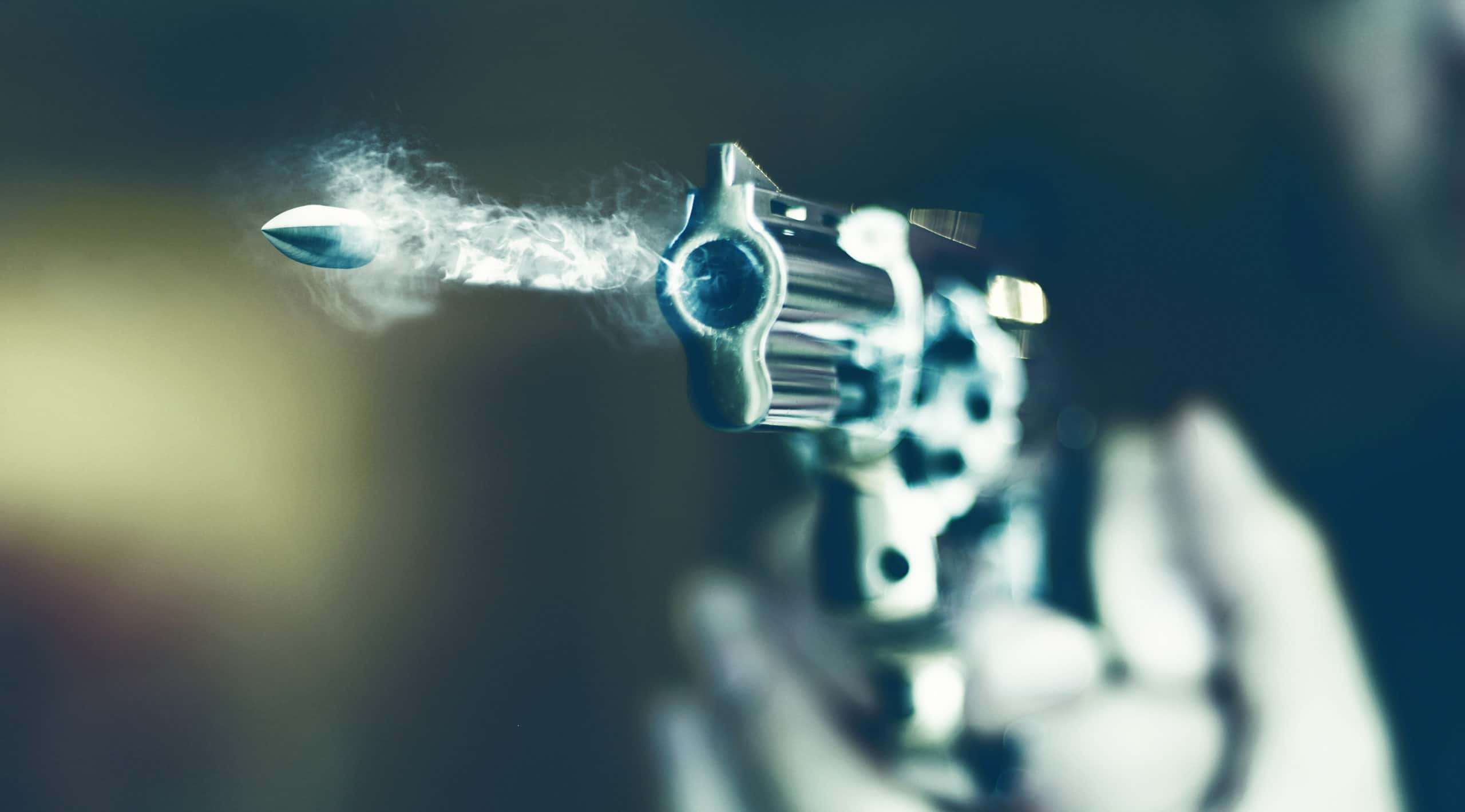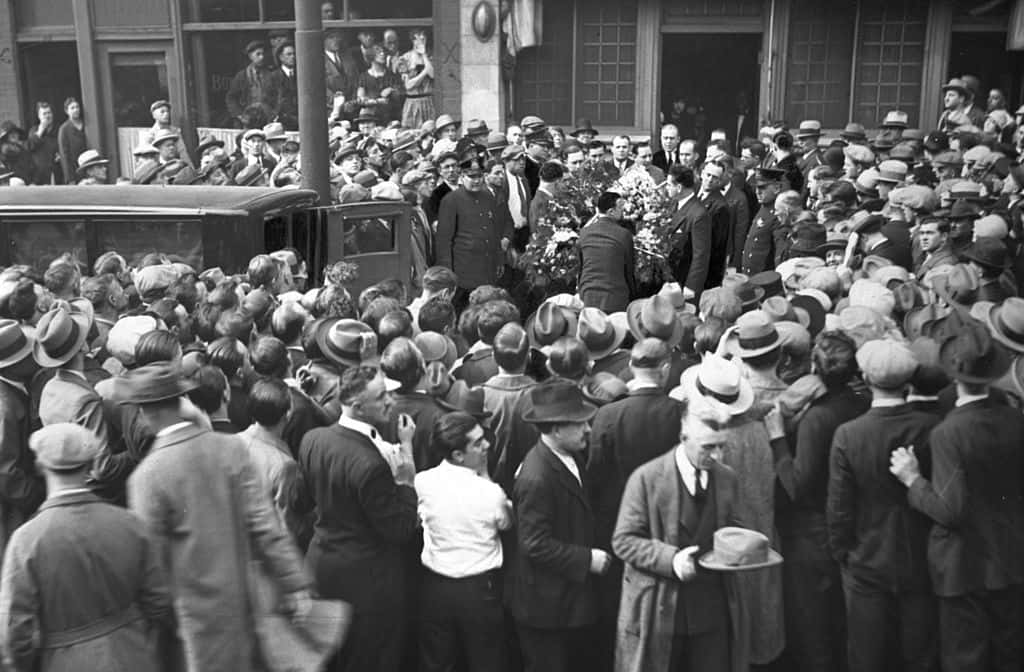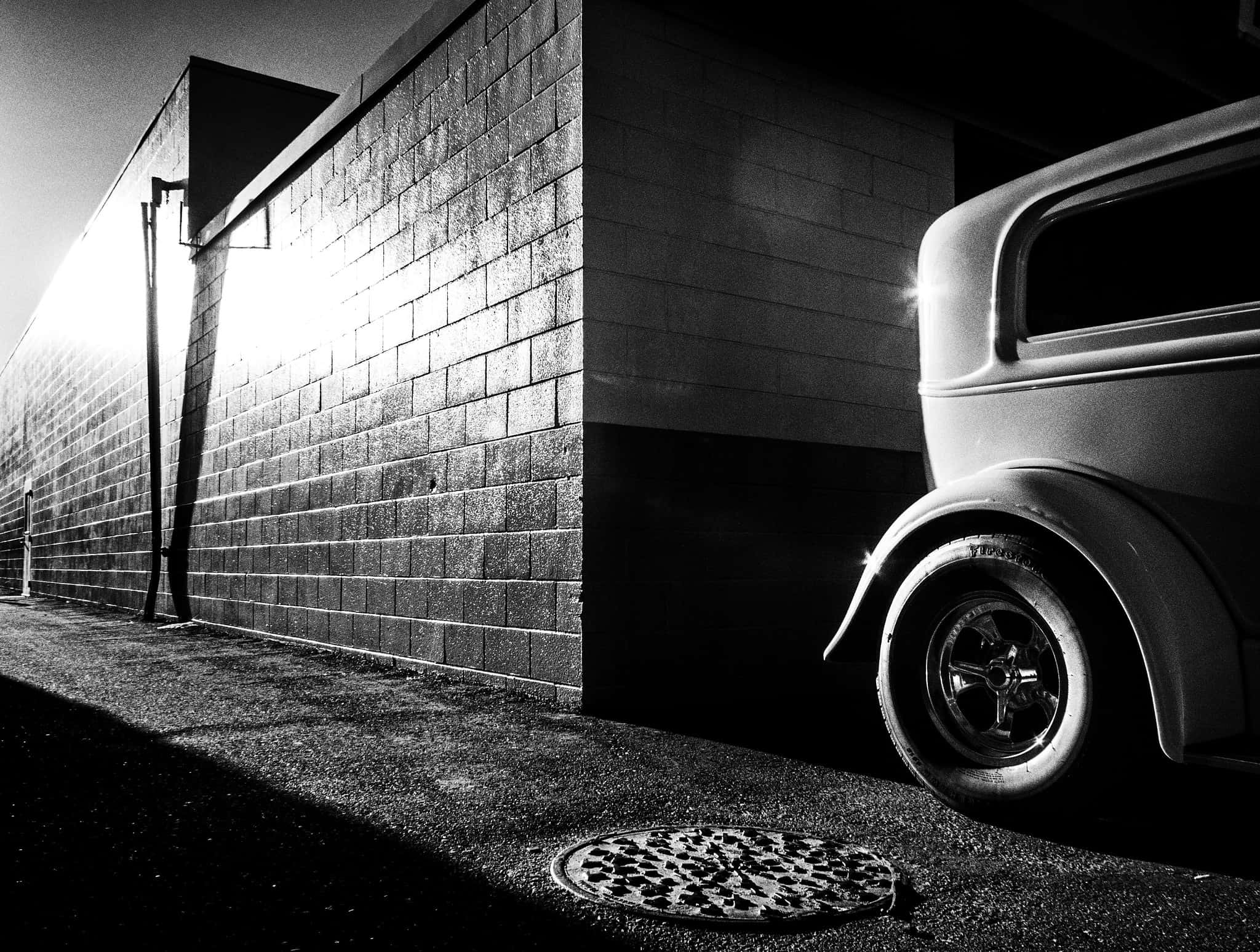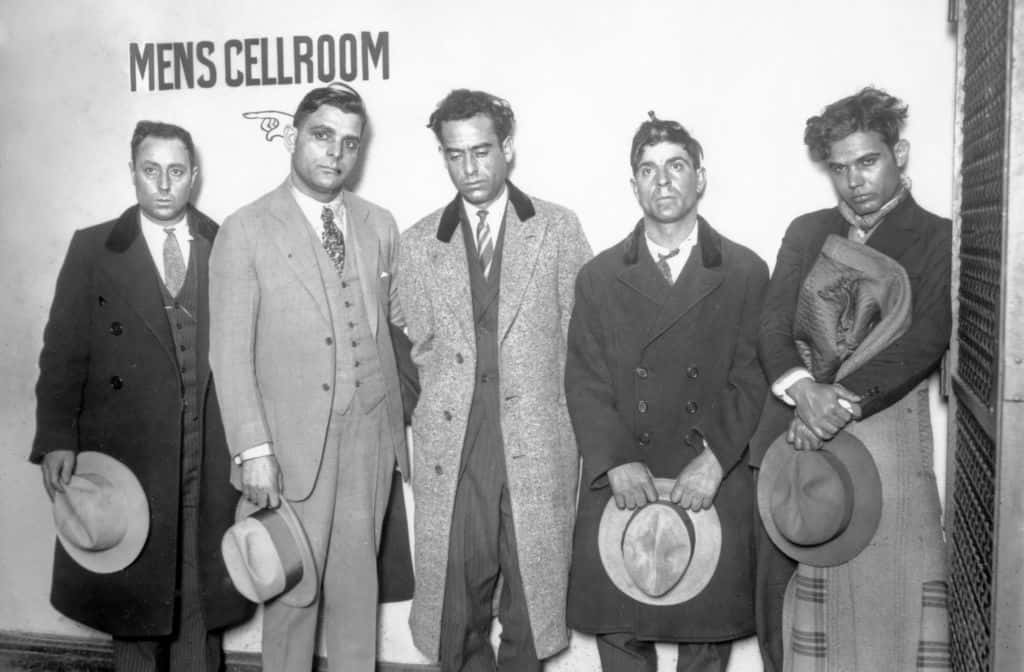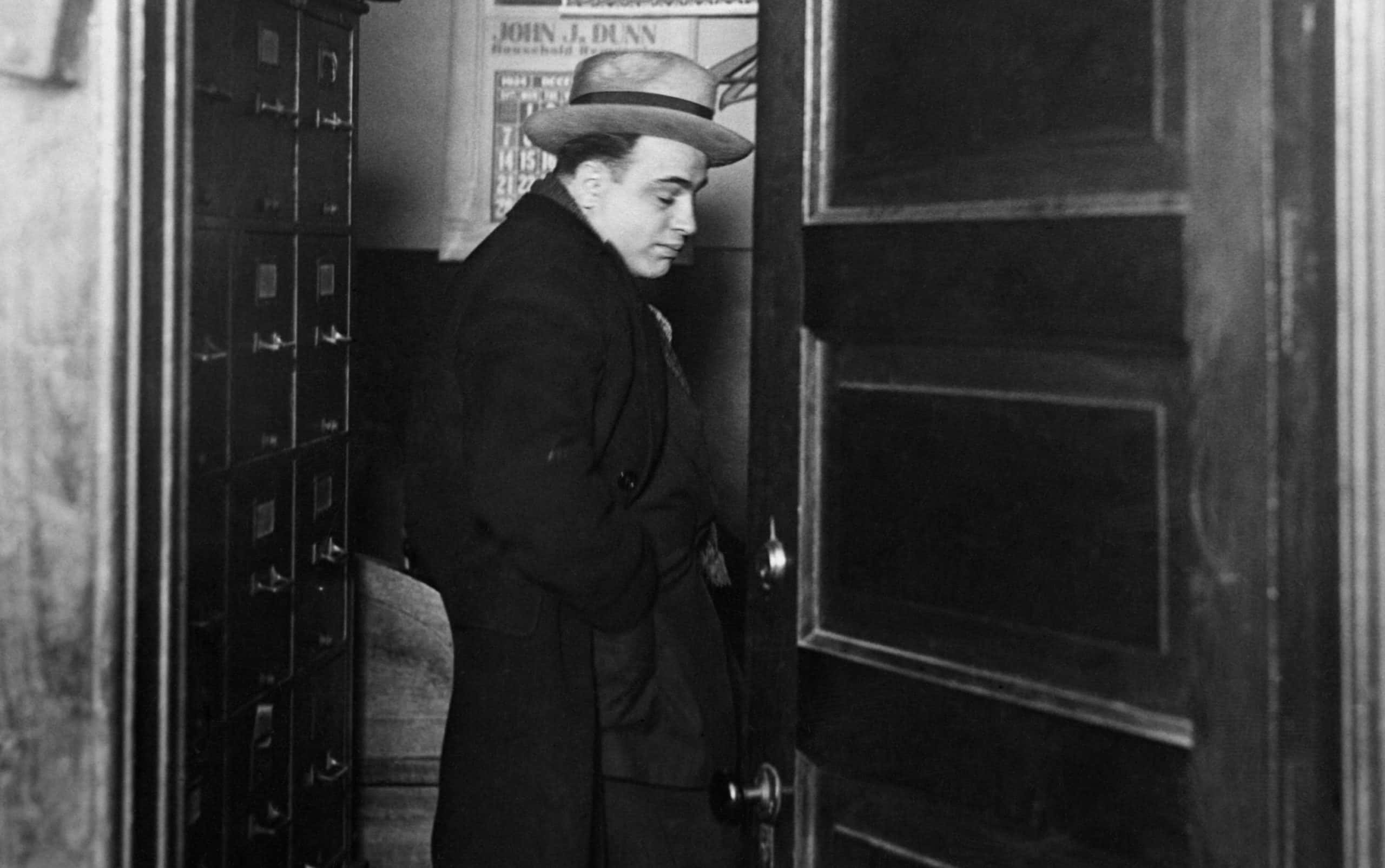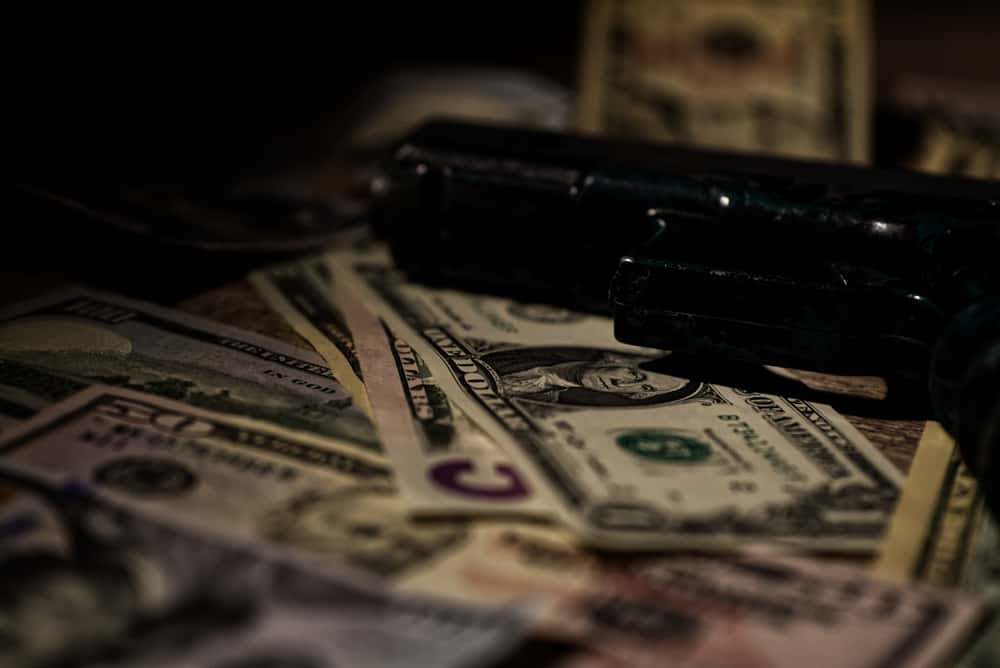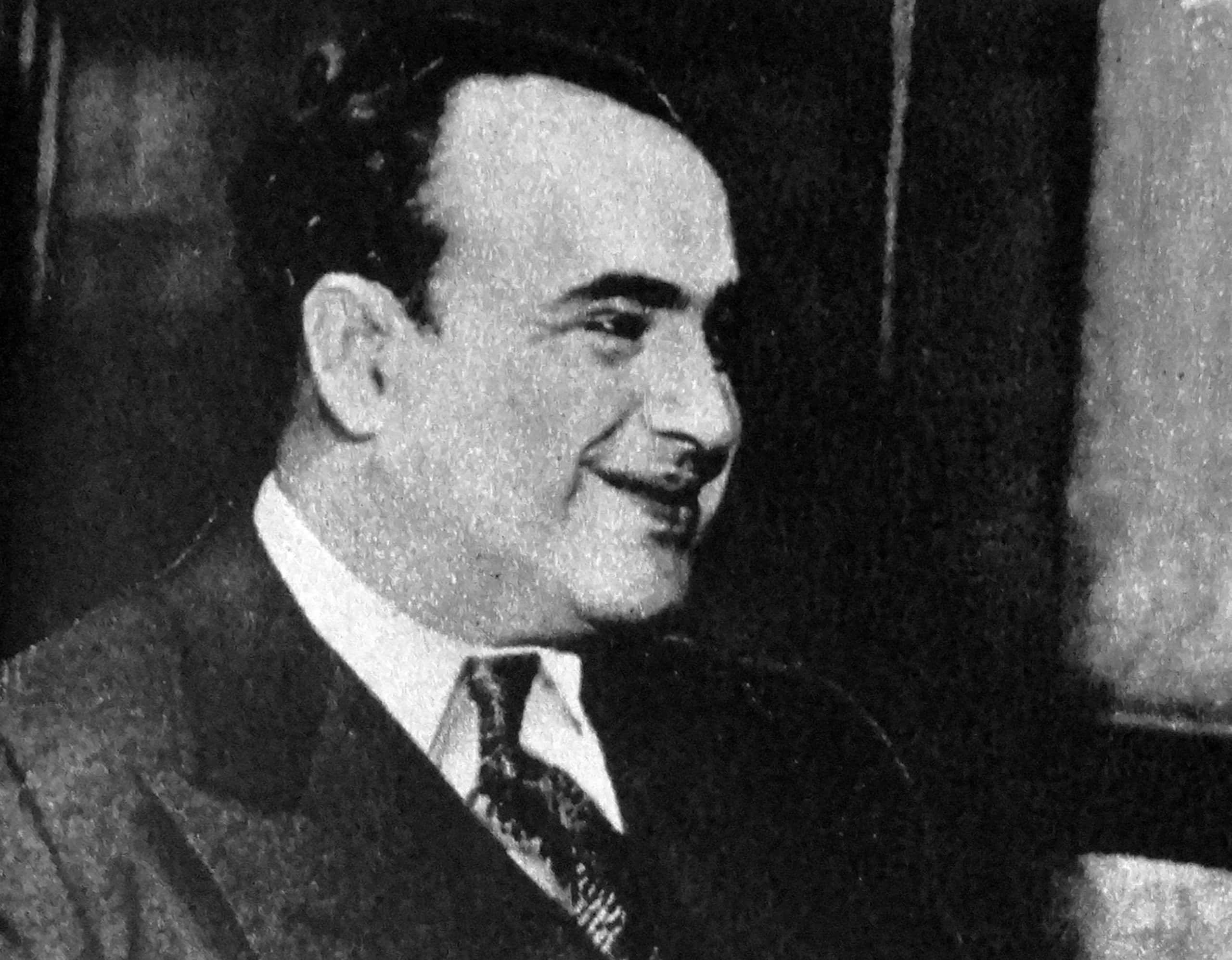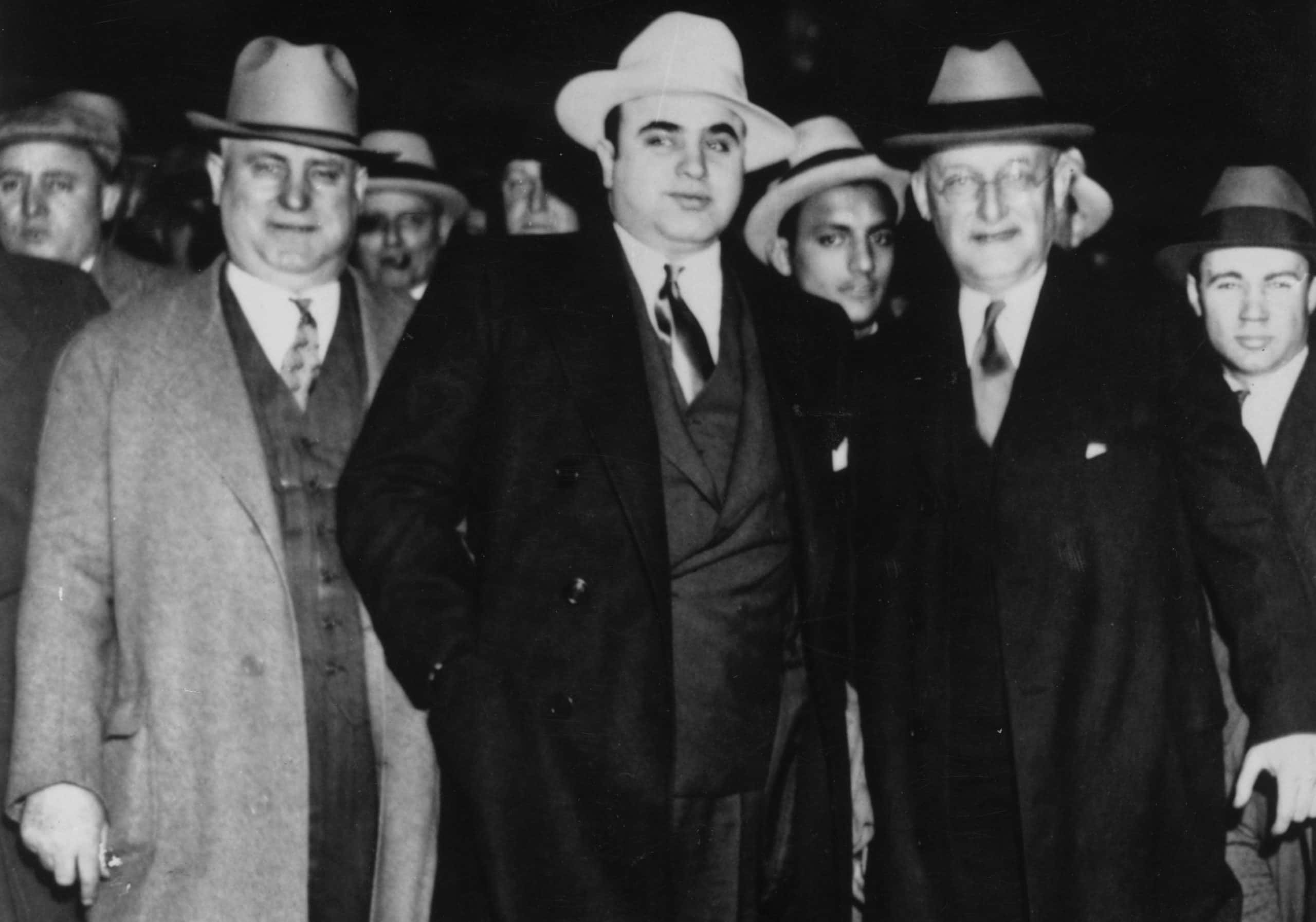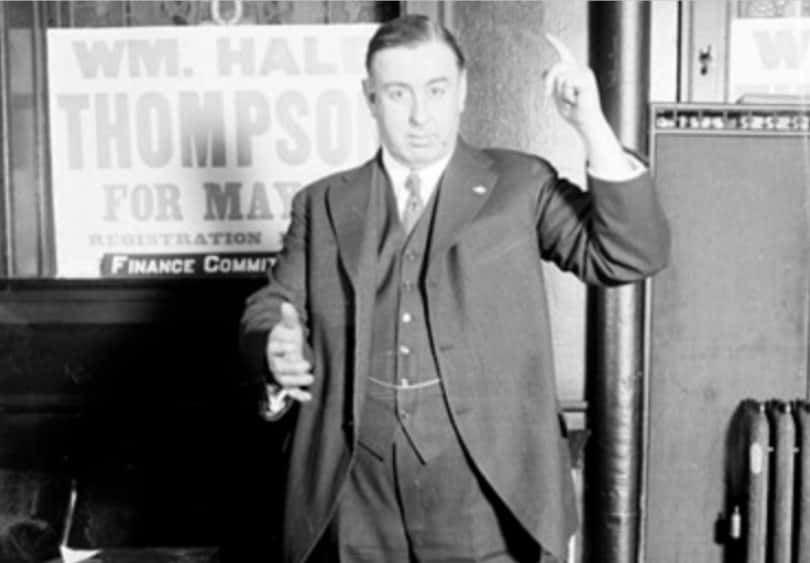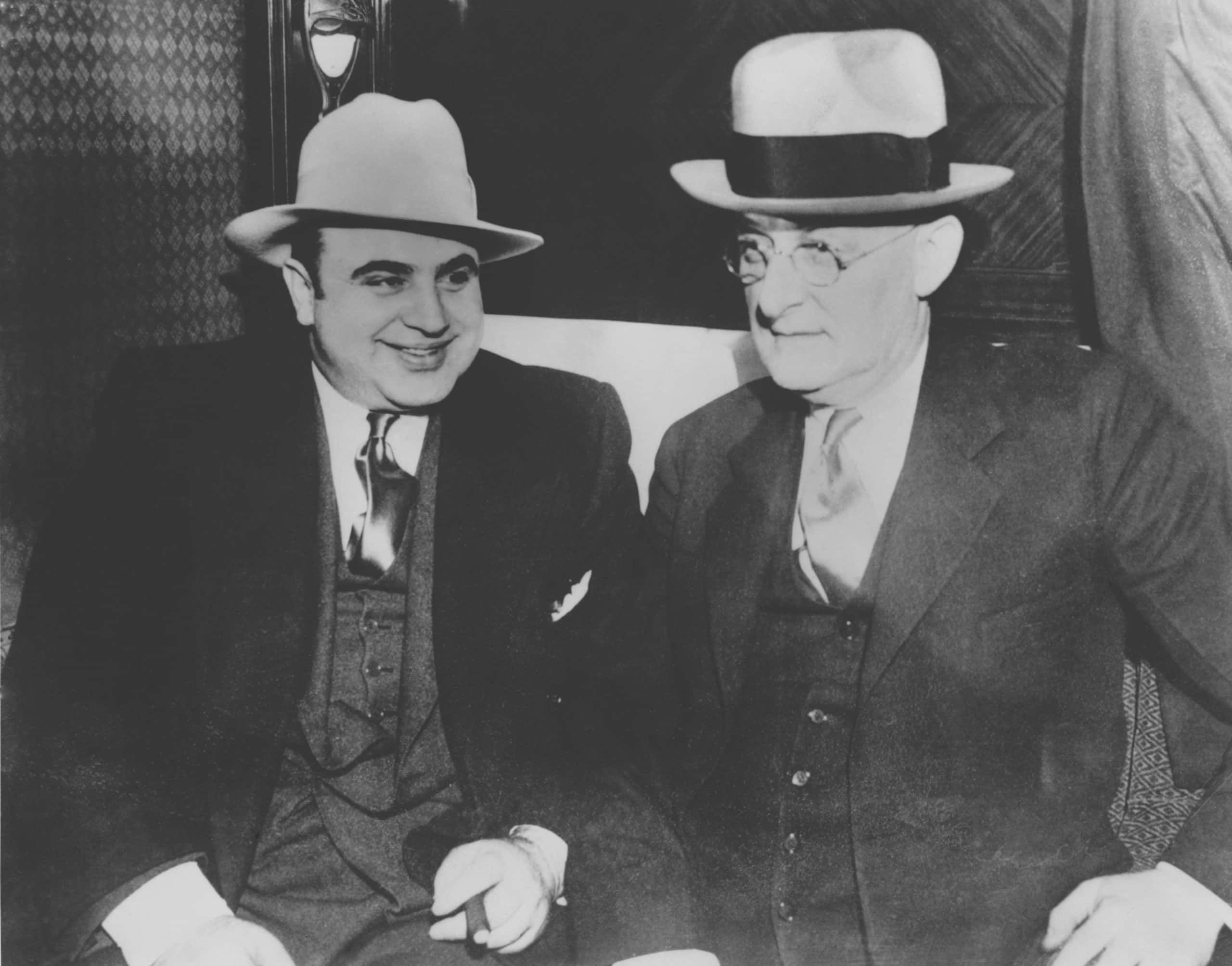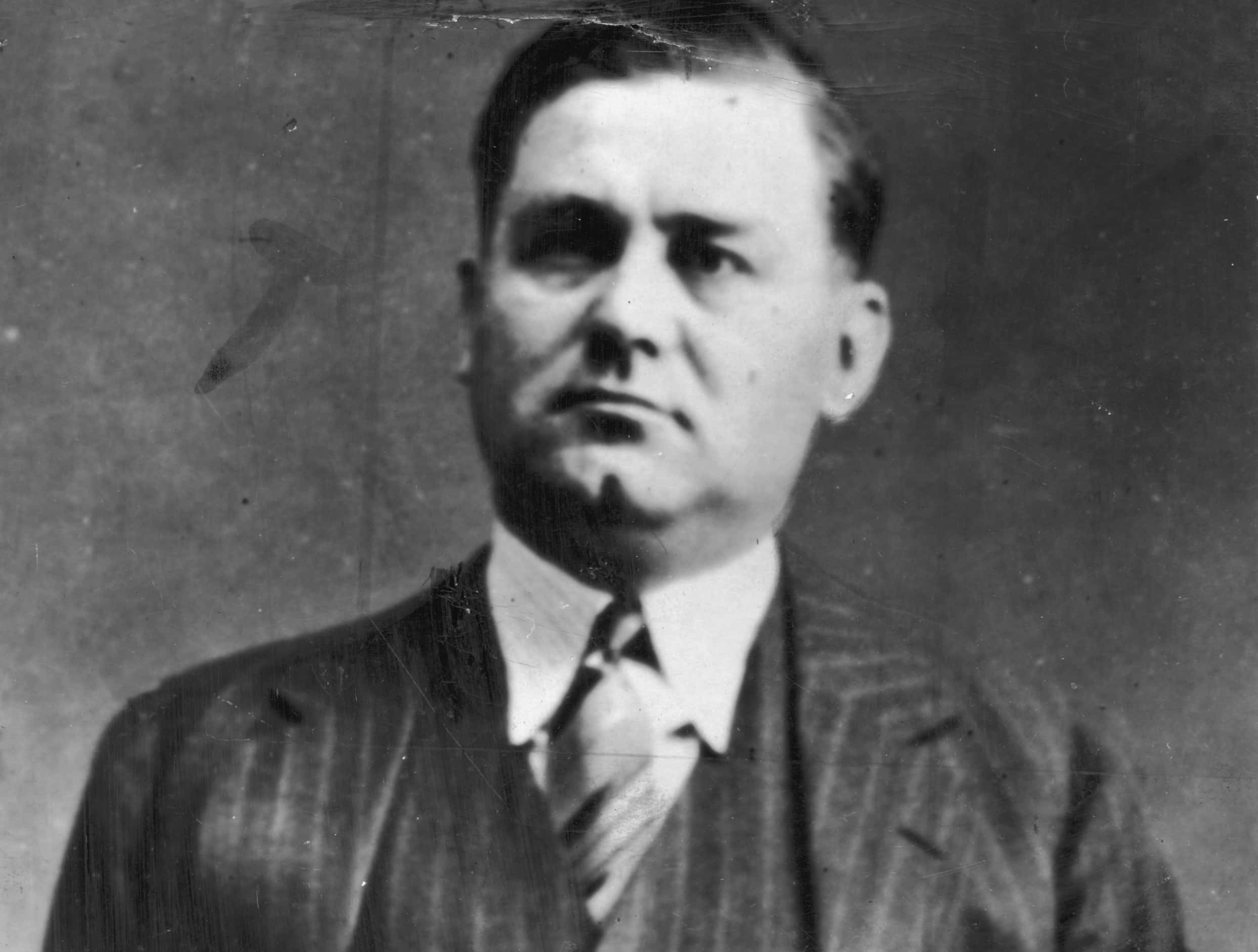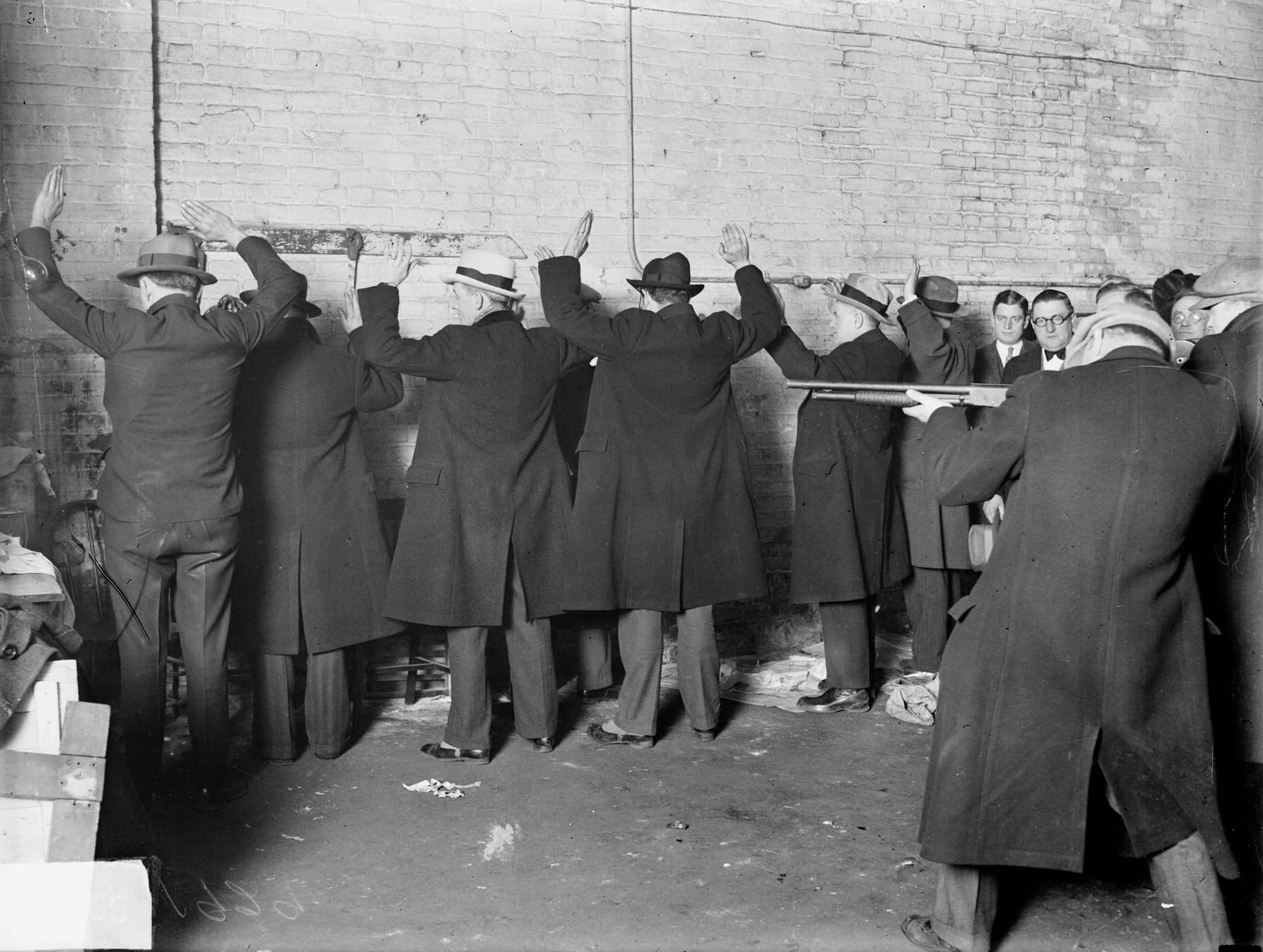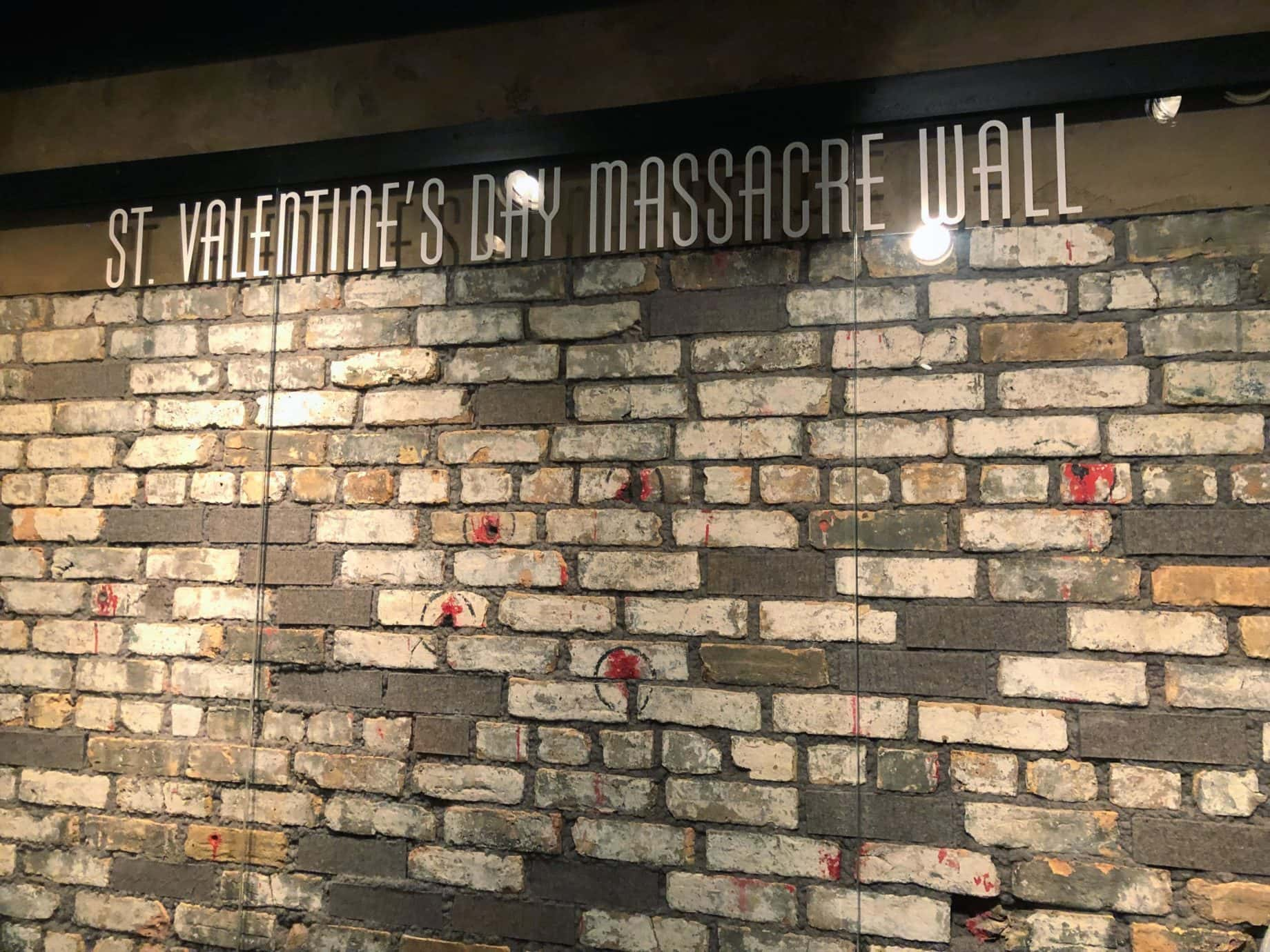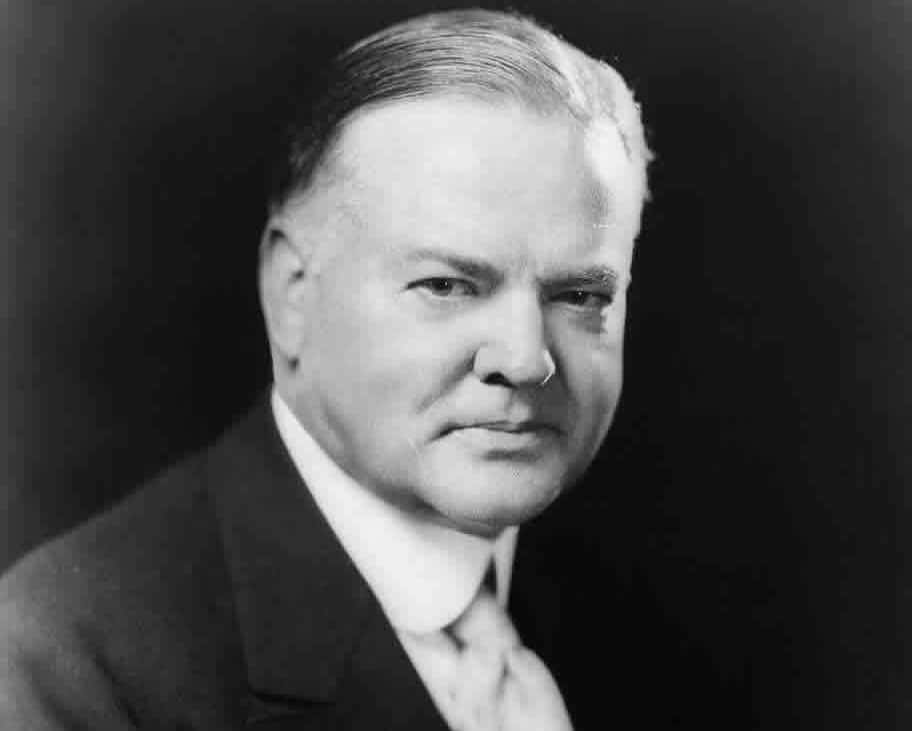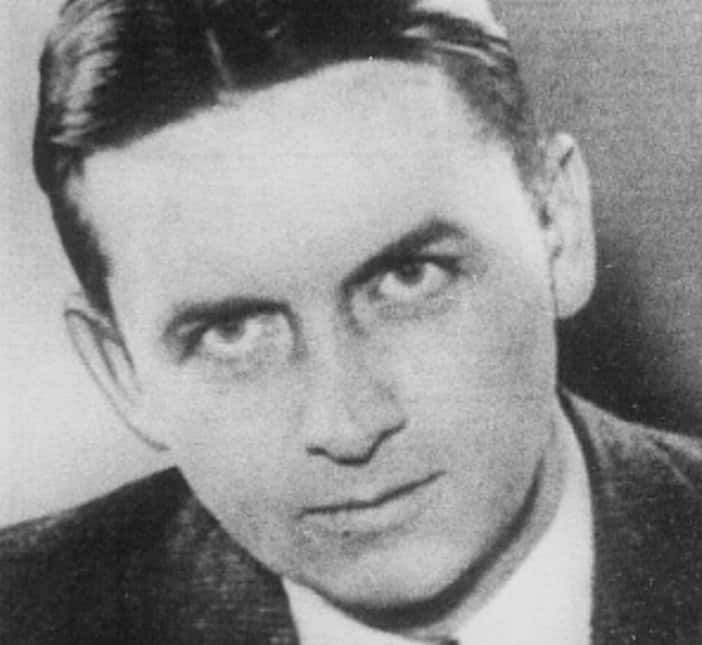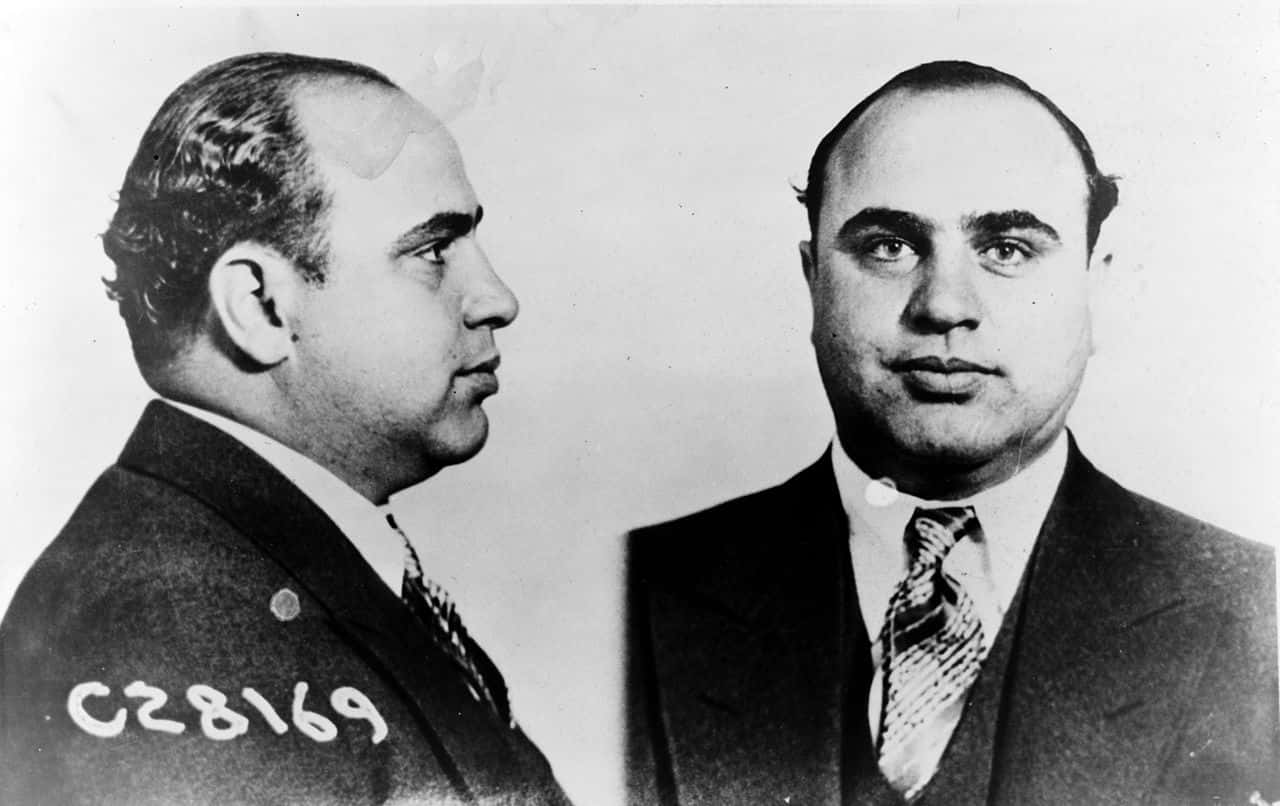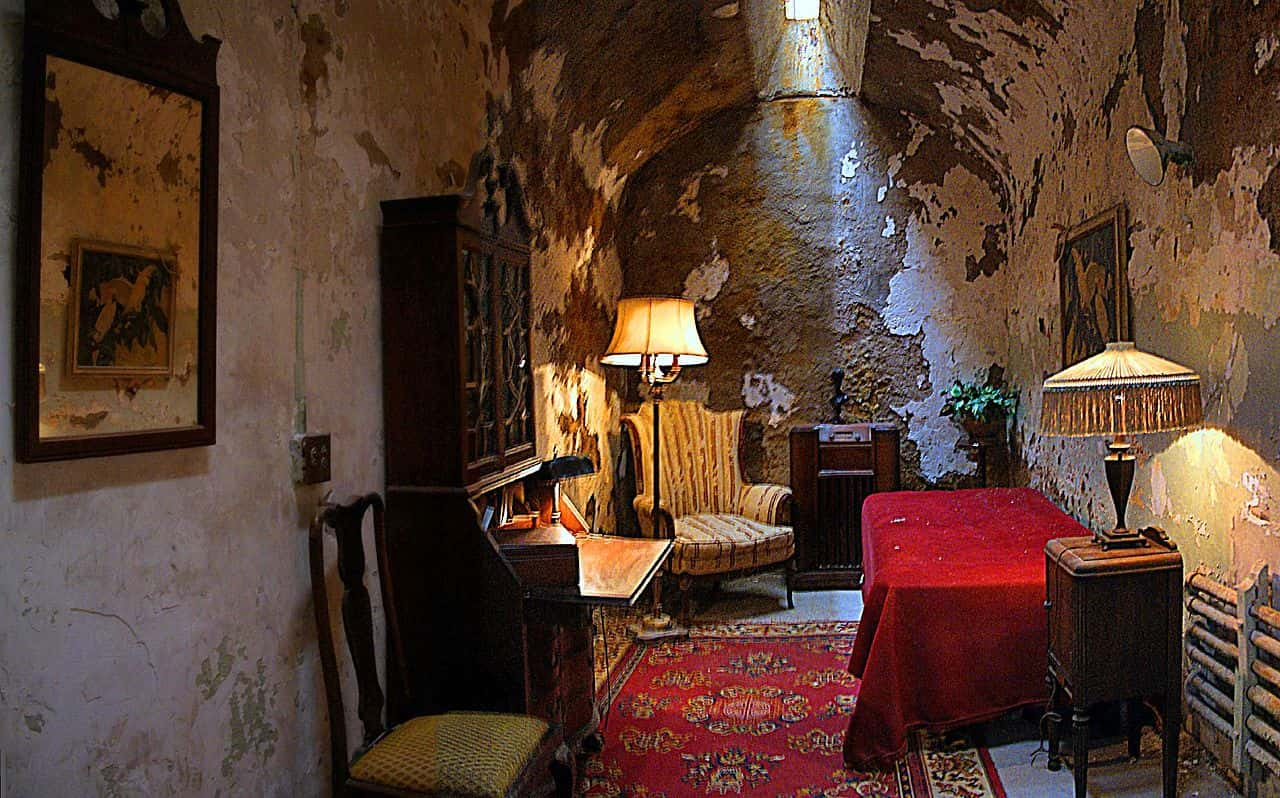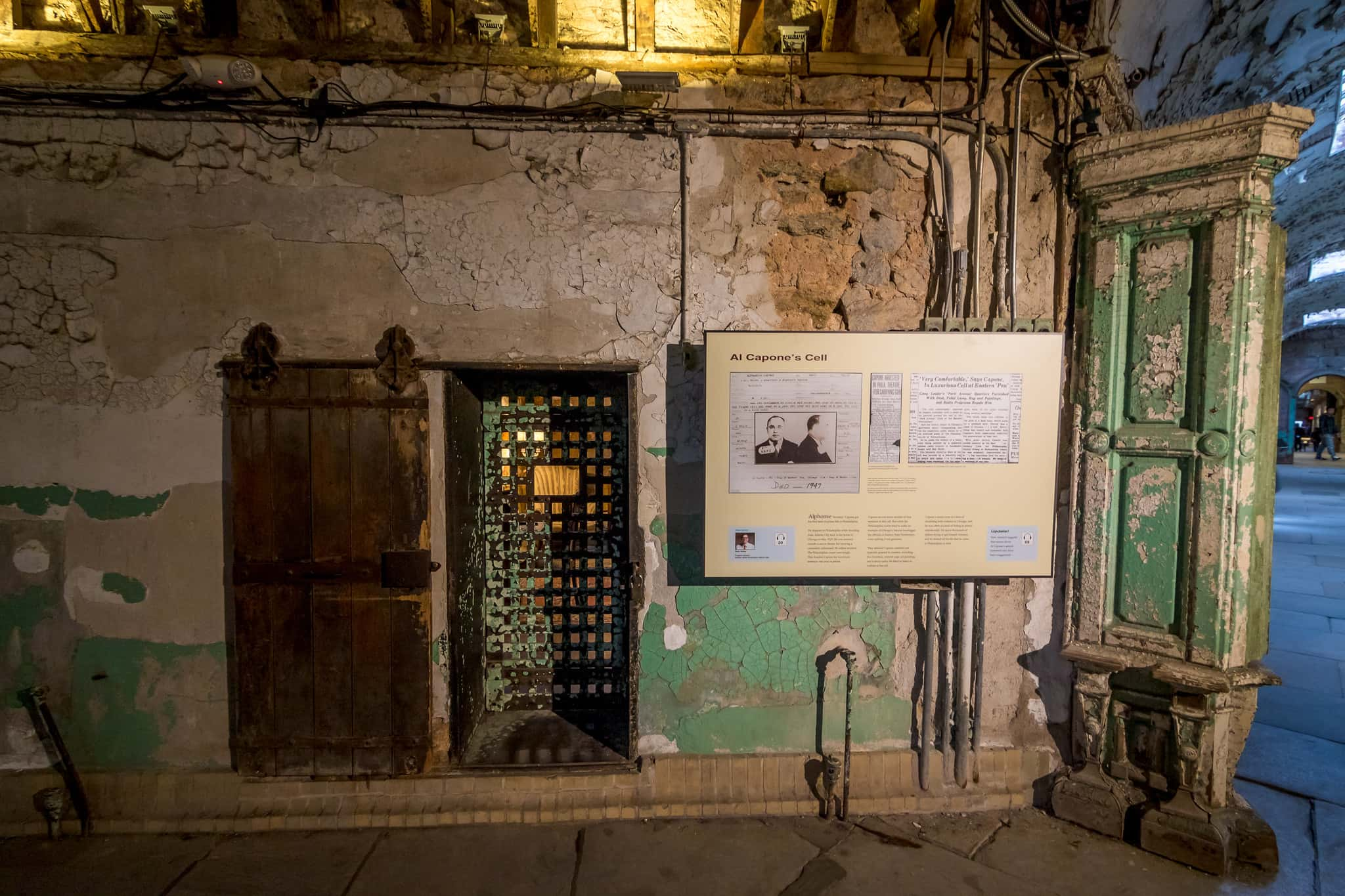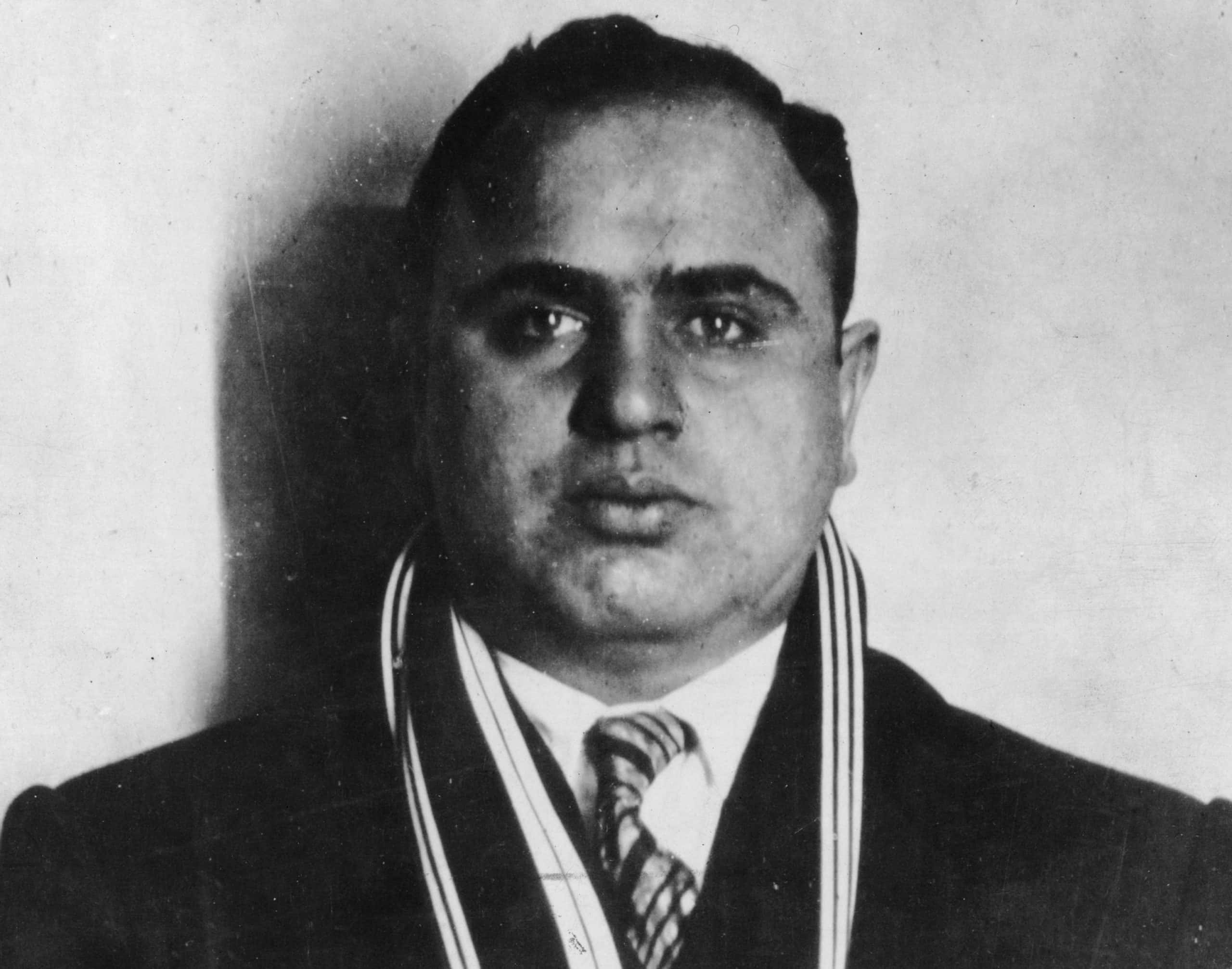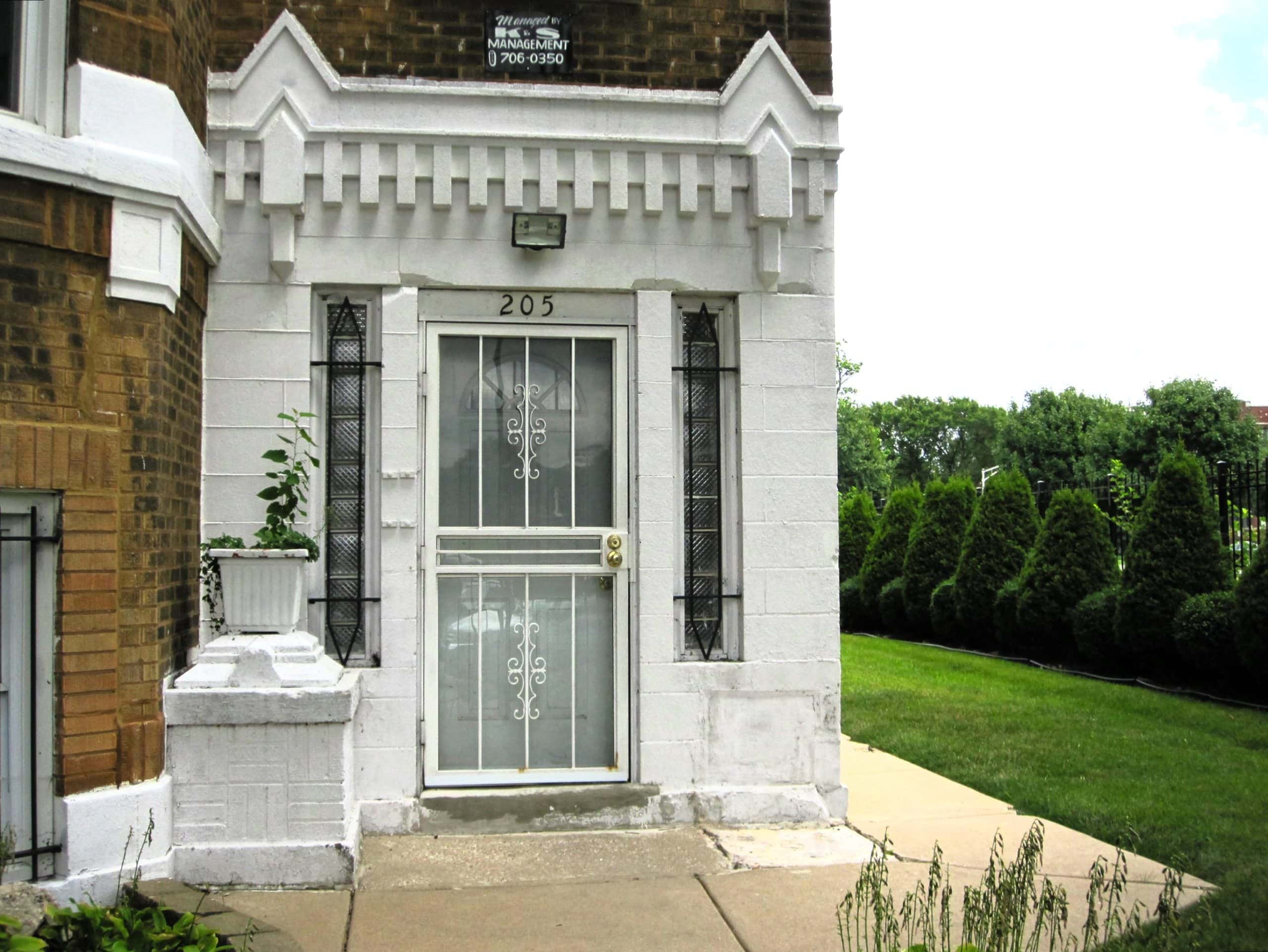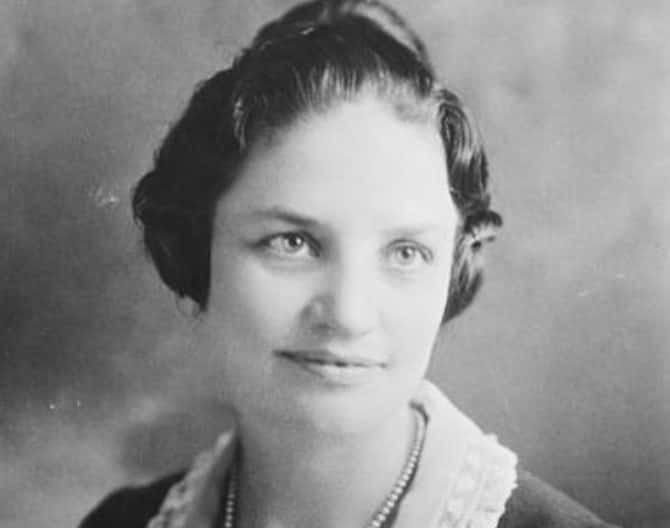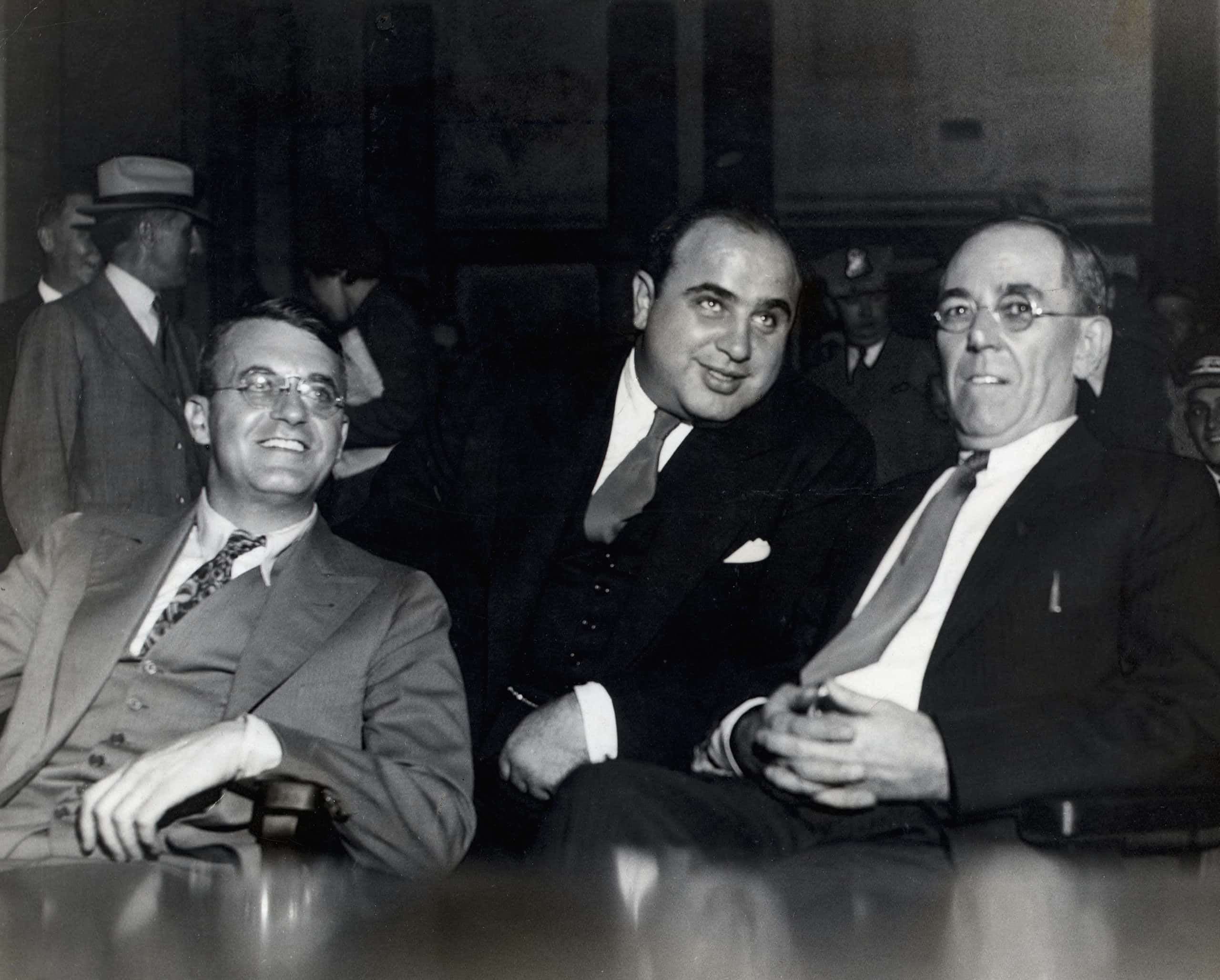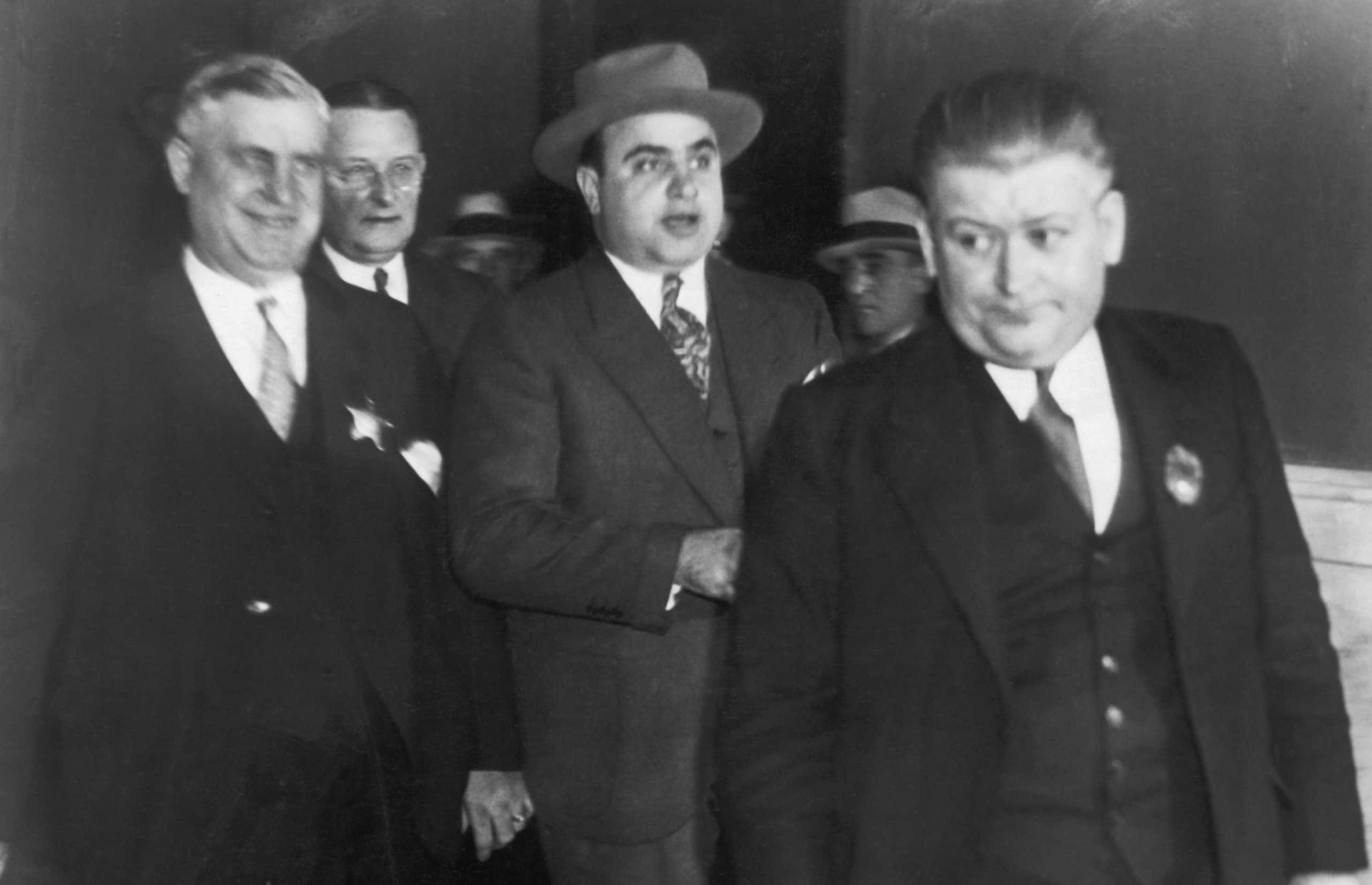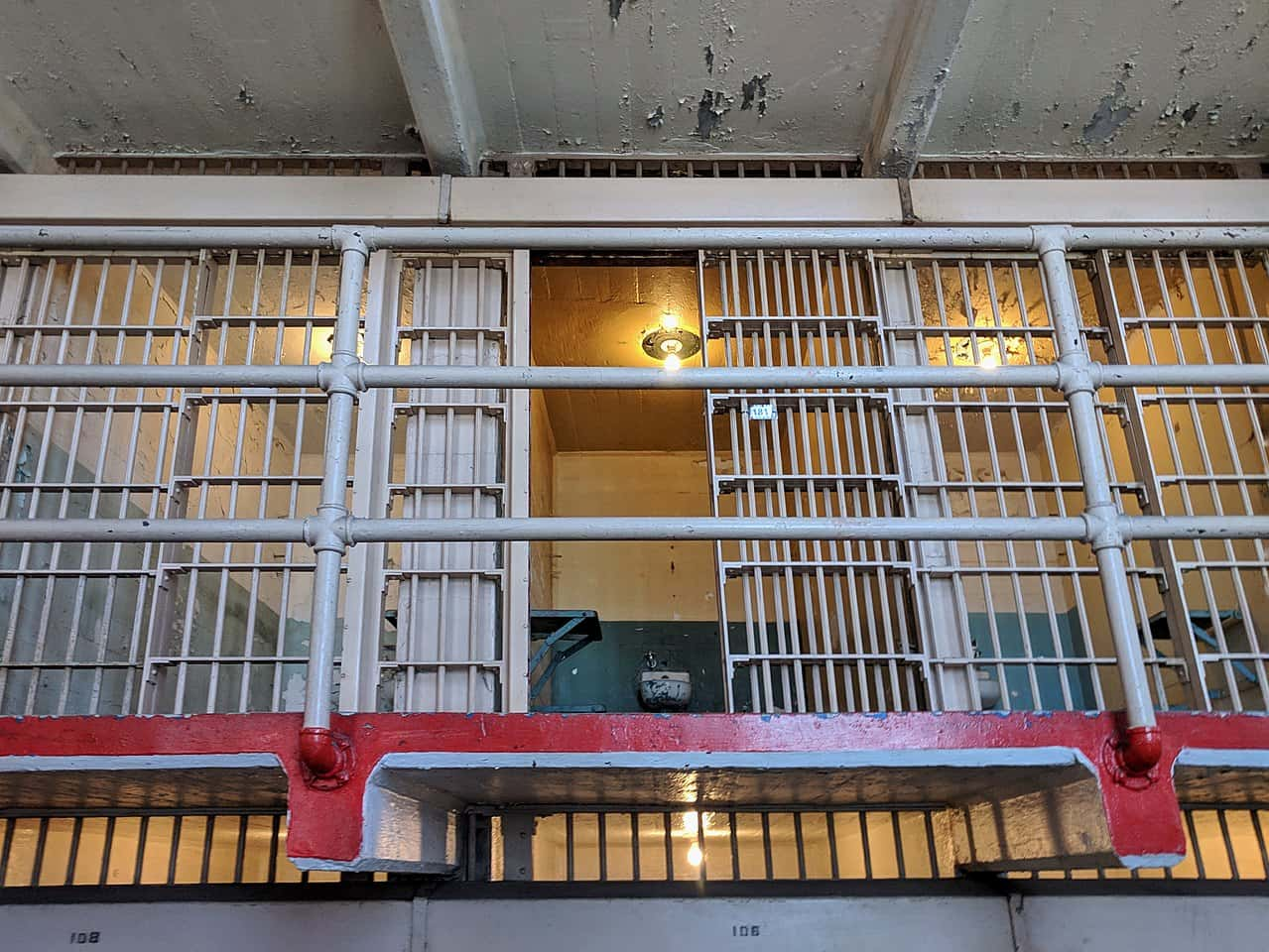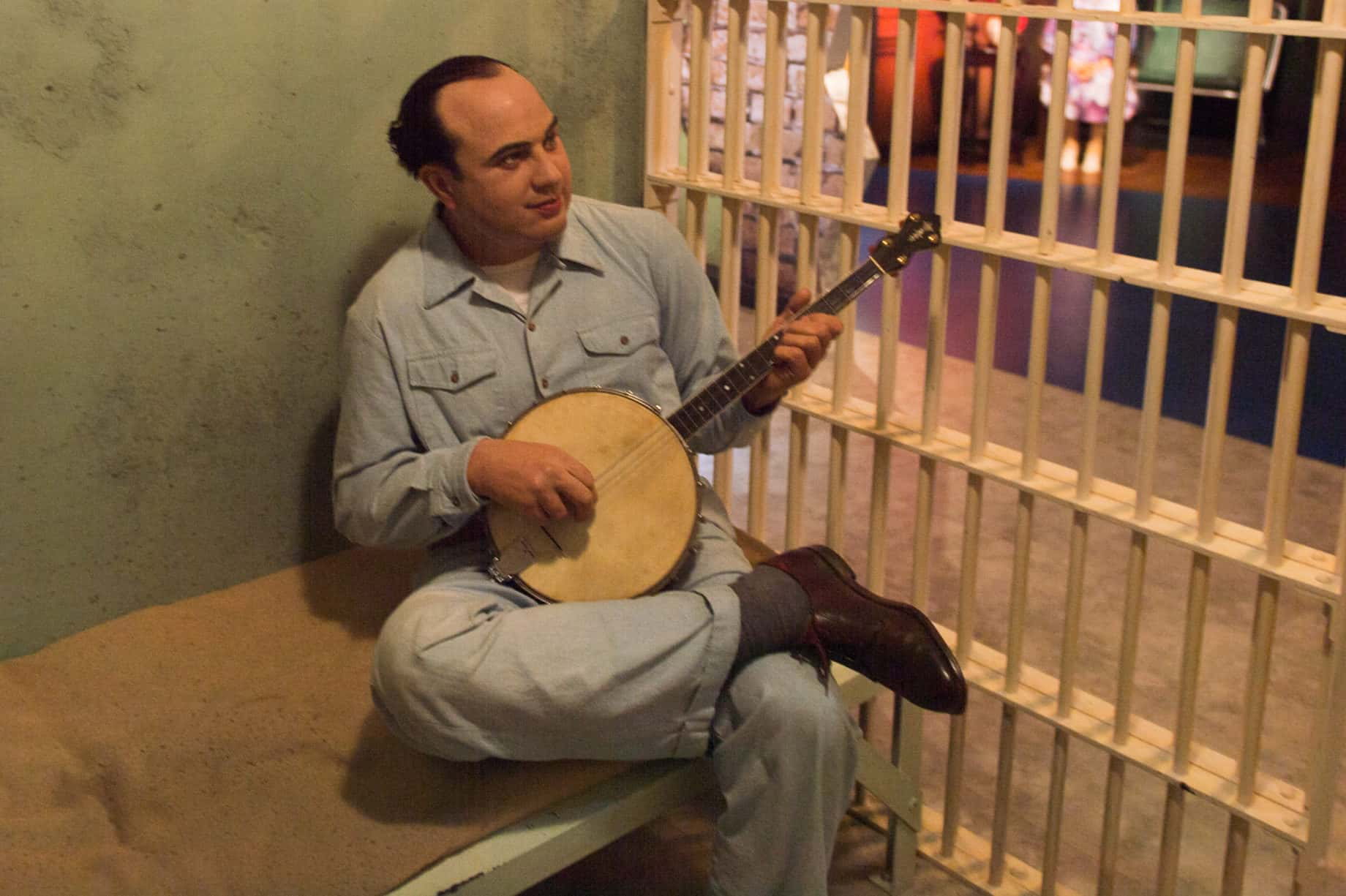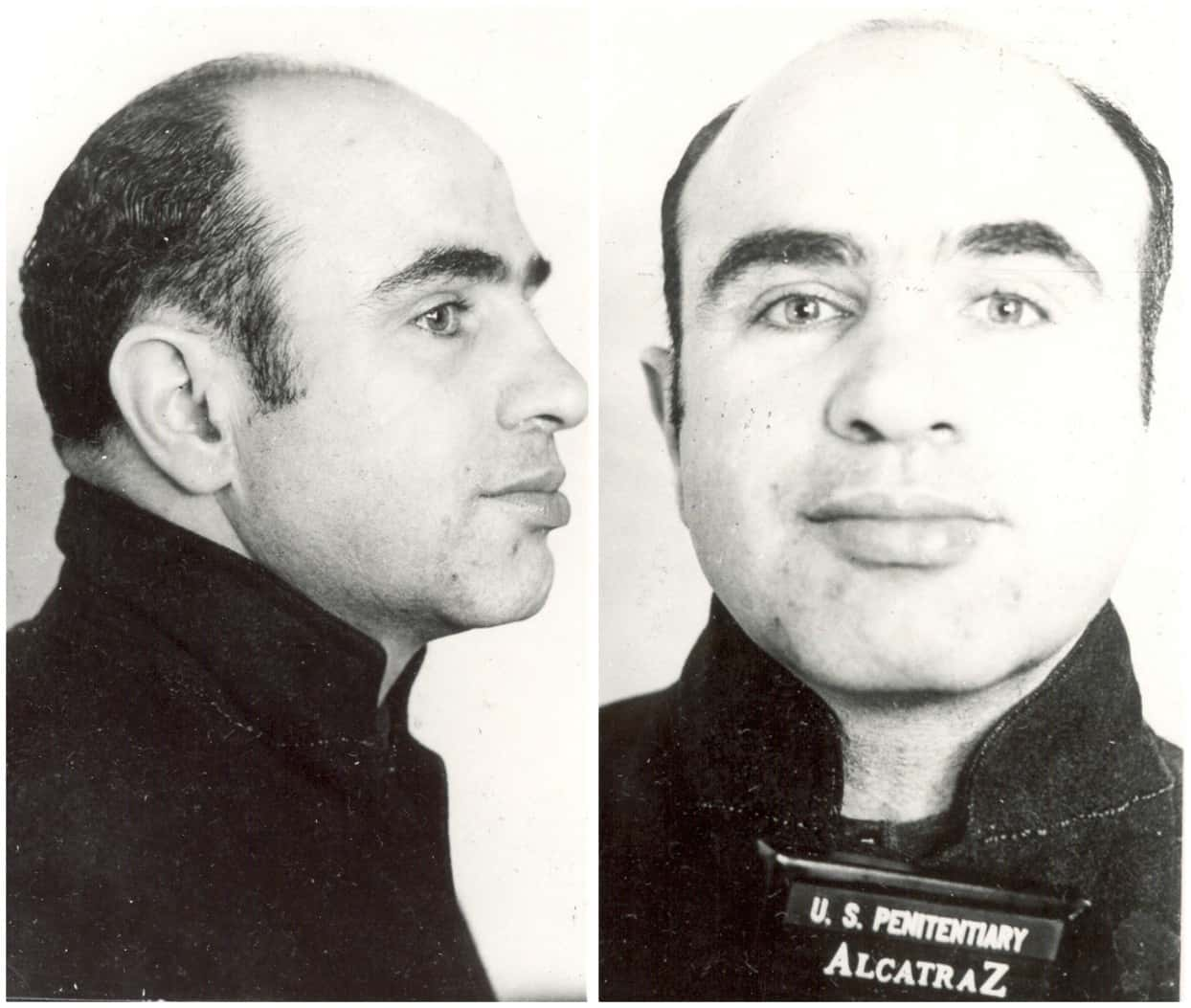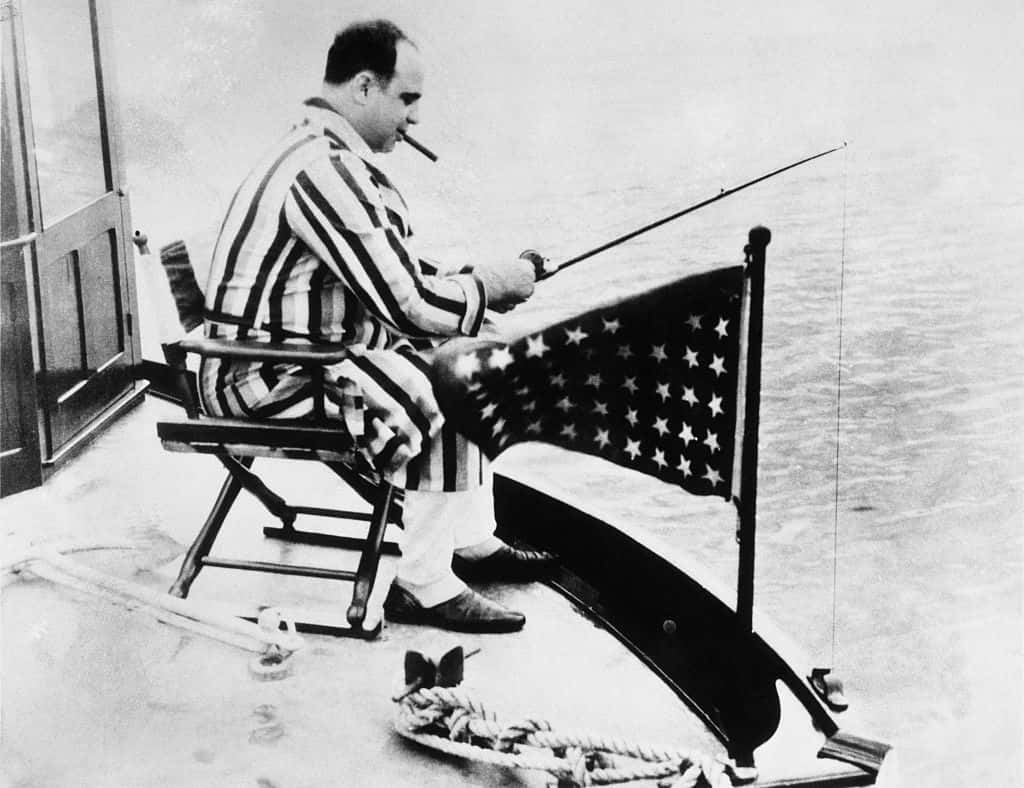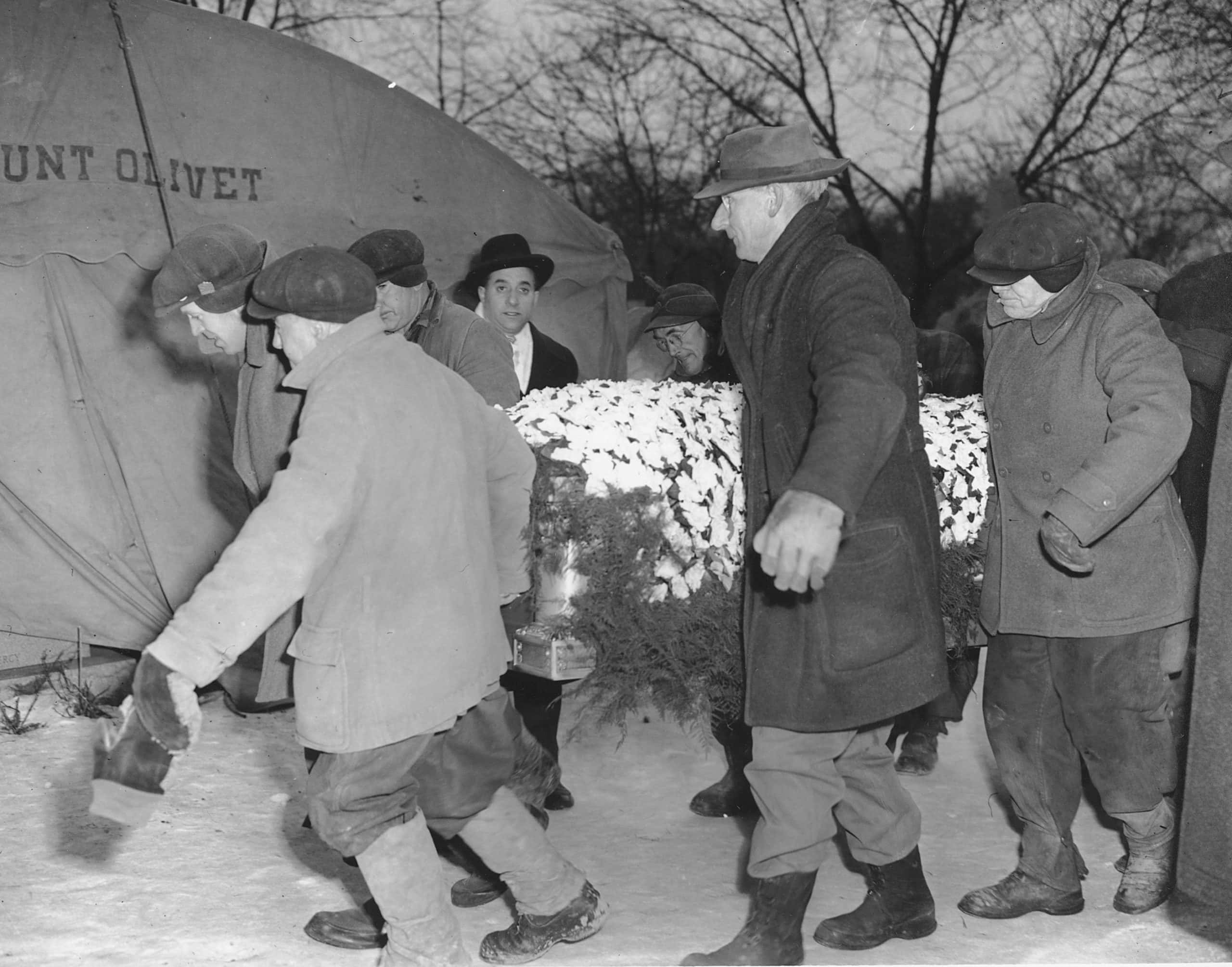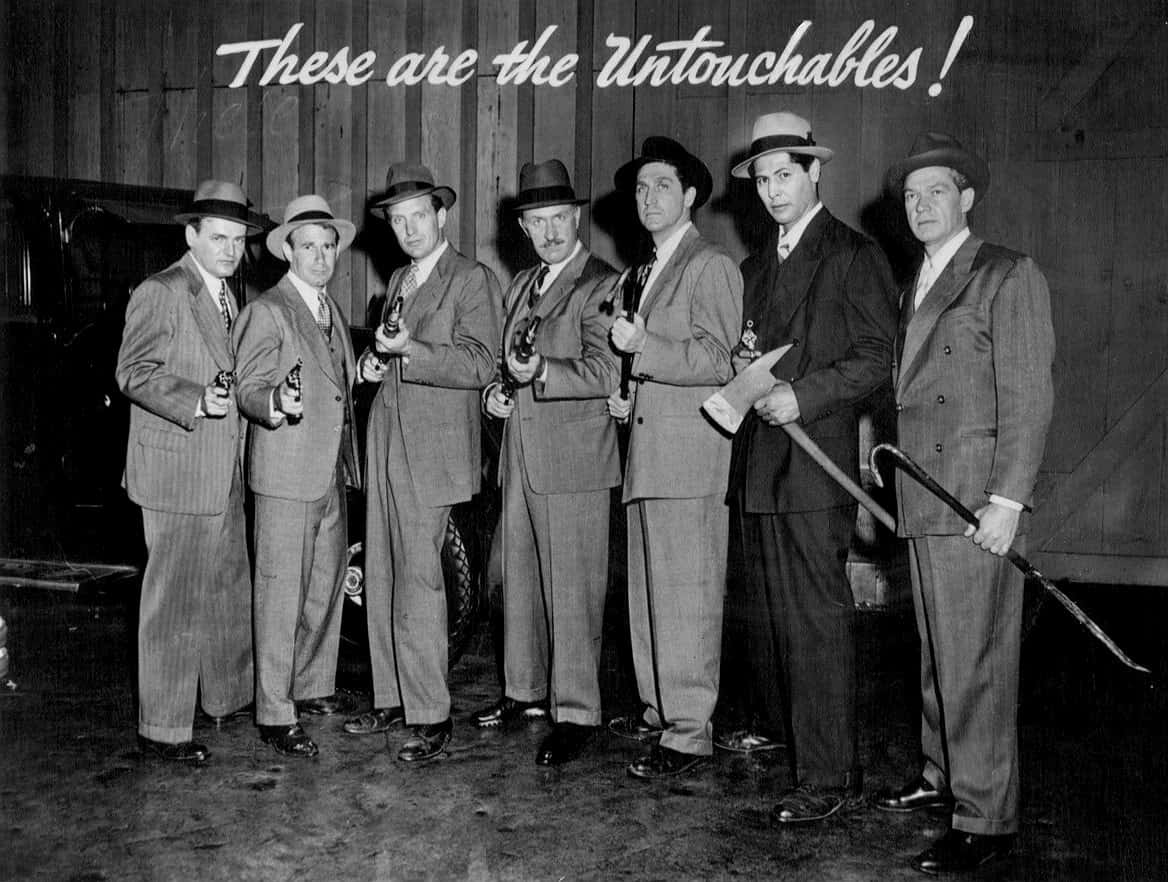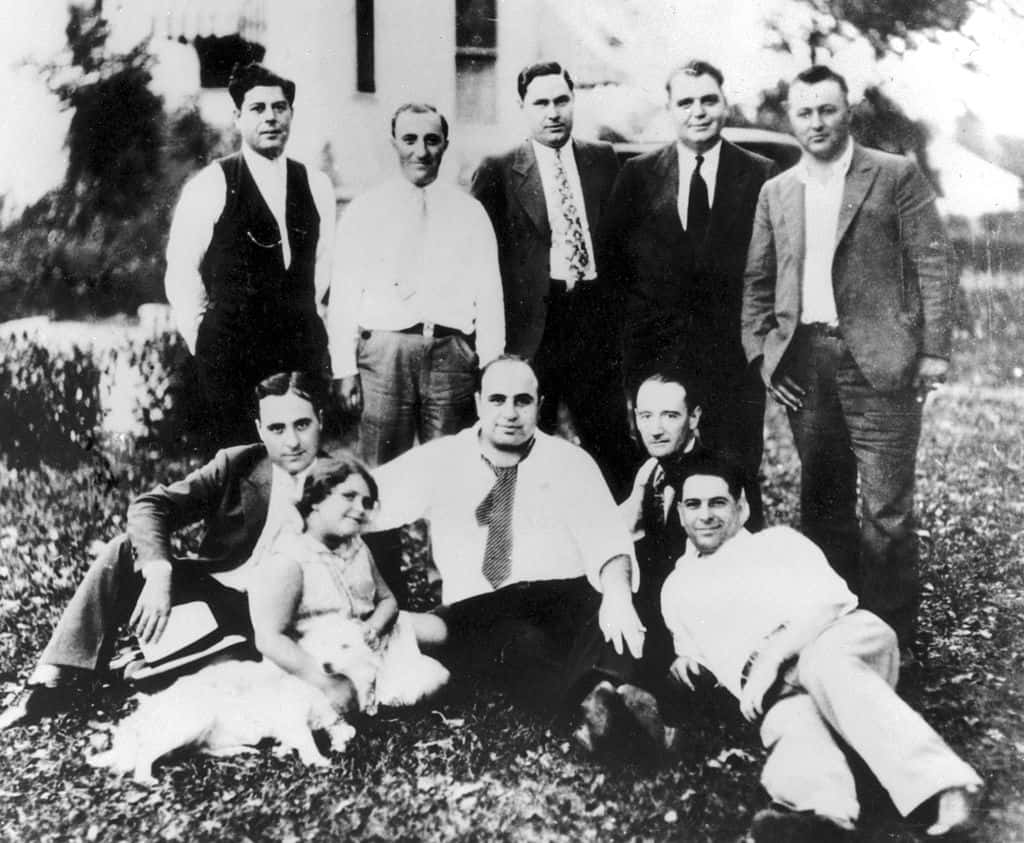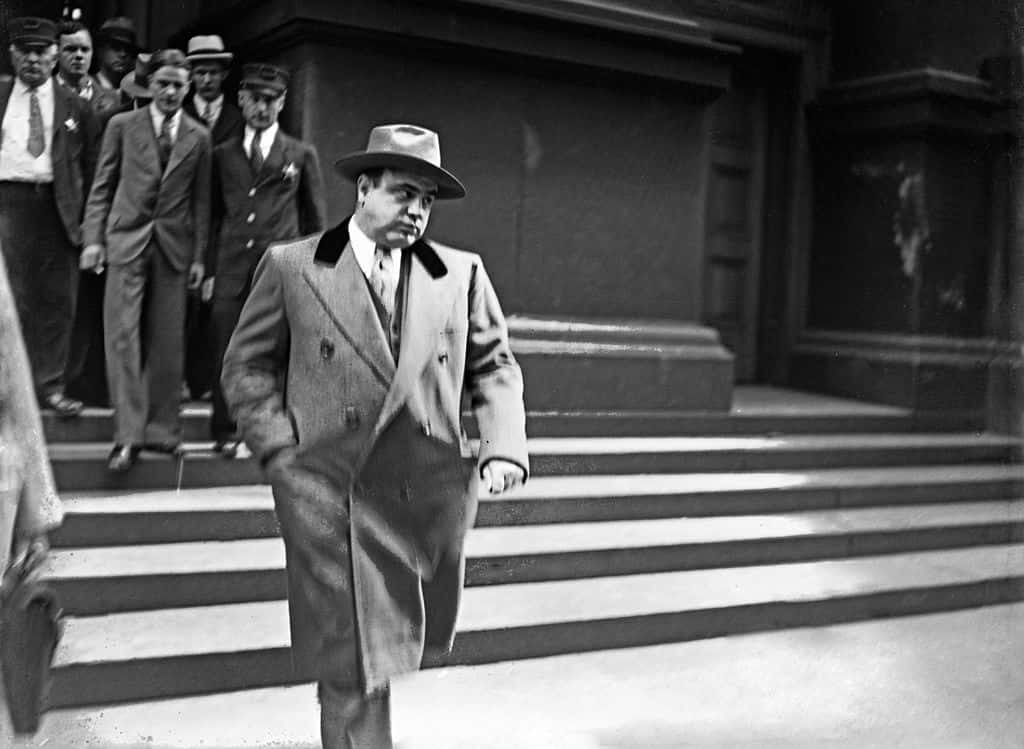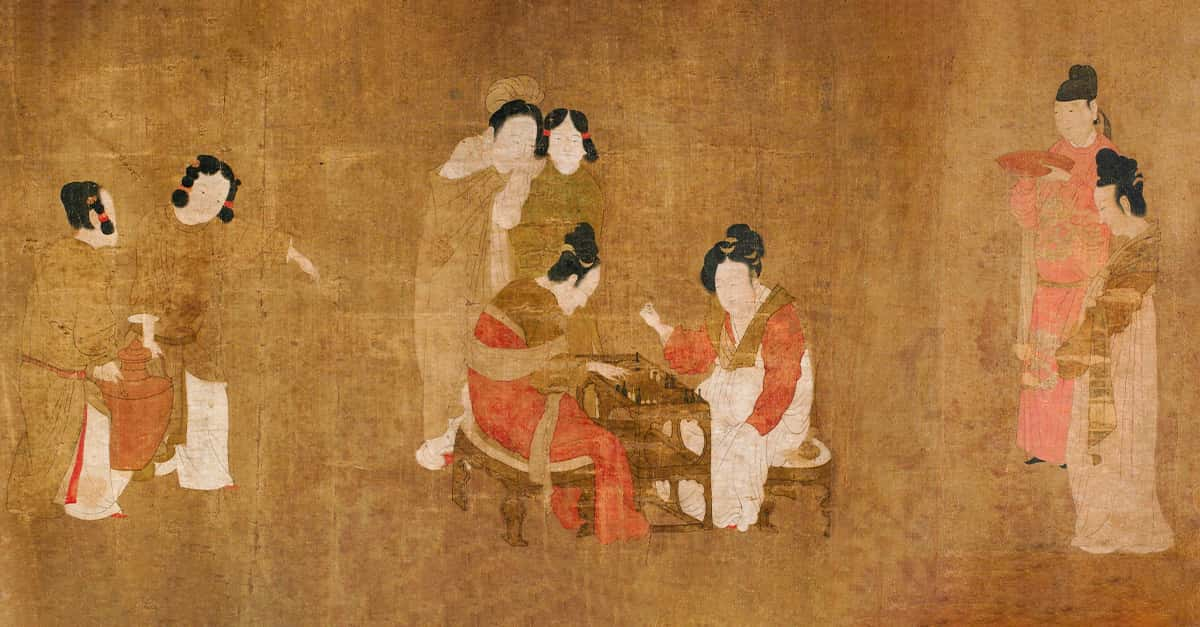Al Capone is the most infamous gangster in American history. This larger-than-life figure terrorized the streets of prohibition-era Chicago, yet his boisterous personality and extravagant lifestyle made him a national celebrity. But the life Alfonse Capone lived came with a heavy price. When Scarface's end finally came, it was absolutely brutal—but it was one heck of a ride while it lasted.
1. He Came From A Huge Family
Al Capone's origins were similar to many Americans. Born in Brooklyn, New York to working-class Italian immigrants, he grew up in a hectic household. Young Alfonse shared the small Capone apartment with his parents and seven siblings. The Capones eked out a living alongside the countless other immigrant families in New York City.
It didn't take long before young Alfonse started making a name for himself—for all the wrong reasons.
2. He Attacked His Teacher
Al Capone was a surprisingly strong student, but school just wasn't for him. He went to an incredibly strict Catholic school, and in case you couldn't guess, Capone had some issues with authority. At 14, his school days ended with a literal bang. A confrontation with a teacher turned violent, and Capone punched her square in the face.
The school expelled him immediately, but I don't think Capone was too broken up about it. Anyone could tell that school wasn't in this hulking teenager's future.
3. He Worked Odd Jobs
Once school kicked him out, Capone couldn't just laze around the house all day. He came from a working-class family, so his family expected him to work. He found odd jobs across Brooklyn, from a candy store to a bowling alley. Capone even spent some years playing semi-professional baseball on the side. But while he'd spend the rest of his life swinging a bat, it wouldn't be baseballs that he'd be hitting.
After keeping mostly on the straight and narrow for the rest of his teenage years, Capone met the man who'd set him on the path to infamy.
4. He Had A Bad Role Model
Teenage boys look for father figures all over, and Al Capone found one in Johnny Torrio. Torrio was tough, confident, and bursting with charisma. He also happened to be an infamous gangster. Capone looked up to Torrio, and learned all the wrong lessons from him. Al Capone discovered the way to get all the money and power he could dream of, for anyone willing to take it for themselves.
Pretty soon, young Al Capone would be doing a lot worse than punching teachers.
5. He Fell In With The Wrong Crowd
Al Capone was a tough Italian kid who knew how to use his fists. It was only a matter of time before he fell in with one of the street gangs that run amok through the city. He started off with small-time outfits like the Junior Forty Thieves and the Bowery Boys. Soon enough, he joined up with the Brooklyn Rippers, then moved on to the infamous Five Points Gang.
Capone learned from a young age that a life of crime brought the money, women, and power that he craved. He also learned the hard way that it came with a price.
6. He Was A Natural Bouncer
Around this time, Capone found another not-so-reputable role model in racketeer Frankie Yale. Yale tended bar at a Coney Island dance hall called the Harvard Inn. With his hulking frame and violent tendencies, Capone was an obvious choice to bring in as a bouncer, even though he was still a teenager. But here's the thing about teenagers: They don't always know when to shut their mouths.
While working at the Havard Inn, Capone would earn the infamous nickname he'd carry for the rest of his life.
7. He Had A Big Mouth
You had to be careful who you offended outside of seedy bars in Al Capone's New York. The youthful and cocky Capone insulted a woman one night while working the door at the Harvard Inn. What he didn't realize was, that girl had a brother with her that night; a man named Frank Galluccio. And Gallucio had a knife on him.
8. He Paid For It
After hearing that Capone had insulted his sister, Galluccio attacked him with a knife, brutally slashing him three times across the face. Scarface was born that night. The nickname followed Capone for the rest of his life, though he himself despised the moniker. He always tried to hide the left side of his face in photographs, claimed that the scars were old wounds from WWI, and got his friends to call him "Snorky," which meant snappy dresser.
But whether he liked it or not, Al Capone would be Scarface from that night on. At least the wounds didn't scare off one Mae Coughlin, the love of Al Capone's life.
9. He Married As A Teenager
Al Capone met Mae Josephine Coughlin on the streets of New York City when he was still figuring out his path in the world. A respectable Irish girl, she seemed an odd choice for the seedy, Italian Capone, but he was smitten. The pair gave birth to a son, Sonny Capone, when they were still teenagers. They married three weeks later, with permission from both of their parents.
If only poor Mae Coughlin had known what kind of life she was signing up for...

History's most fascinating stories and darkest secrets, delivered to your inbox daily.
10. He Cheated On His Wife
Al Capone's domestic life was surprisingly caring and tender. As his criminal enterprises grew, he managed to keep his family life almost entirely separate. By all accounts, Al and Mae had a loving marriage, despite Capone's frequent womanizing while he was away on "business." For the early years of his career, Mae and Sonny got to enjoy the fruits of Capone's labor while remaining completely isolated from his work.
But Al Capone was not going to remain a small-time hustler for long. He was going to make a name for himself—and no matter how much he cared for his family, they'd have to suffer the consequences eventually.
11. He Got An Offer He Couldn't Refuse
When you think Al Capone, you think Chicago, not New York City. That's all thanks to Capone's old mentor, Johnny Torrio. Chicago Mob boss James "Big Jim" Colosimo recruited Torrio to come work for him as an enforcer around 1919. Torrio saw big things in Capone and invited him to head out west with him. The streets of Chicago were where Capone found his fortunes—but that's not all he found there...
12. He Enjoyed The Nightlife A Little Too Much
Al Capone's first gig in Chicago was as a bouncer at a local cathouse. Capone apparently hadn't heard of the phrase "don't dip your pen in the company ink," because he became a regular himself. But, believe it or not, 1920s Chicago cathouses weren't exactly the safest places to get your rocks off. Capone contracted syphilis—the disease that would slowly eat away at him until there was almost nothing left.
But for now, Capone was still young, strong, and hungry. It was time to prove just how far he was willing to go to take what was his.
13. His Boss's Boss Bit The Bullet
Say what you will about life as a gangster, but one thing is for sure: There's lots of upward mobility. In 1920, law enforcement officials found Big Jim Colosimo full of holes outside of his restaurant. As his second-in-command, Capone's buddy Johnny Torrio took over the outfit from there. Officers never proved who did it, but this is around the time that they started hearing about a young thug named Al Capone.
Though Torrio and Capone had worked for Colosimo, they also had a very good reason to want him out of the picture.
14. He Was Willing To Do What It Takes
Ever heard of a little thing called Prohibition? The ban on alcoholic beverages across the United States ironically provided a huge opportunity for gangsters who played fast and loose with the law to begin with. Johnny Torrio saw dollar signs, but for whatever reason, Big Jim was firmly against getting into the bootlegging business. Once Big Jim was gone, Torrio took over the outfit and they quickly started getting rich through, you guessed it, bootlegging.
As I said, no one ever proved it, but most people agreed that Torrio ordered the hit on Colosimo. What's more, many have speculated that Capone himself might have been the trigger man.
15. He Started Making Moolah
Al Capone was a small-time thug no longer. Johnny Torrio's mostly-Italian gang was the biggest in Chicago, and Capone served as his right-hand man. They made money hand-over-fist with their bootlegging enterprise, but here's another thing about the gangster life: You tend to make a lot of enemies. Torrio and Capone mostly tried to play nice with their rival gangs, but it was only a matter of time before things got bloody.
16. He Showed No Mercy With Enemies
Torrio and Capone's outfit was the biggest in the city, but there were plenty of other gangs who would kill for that place on top of the mountain—literally. One of these rivals was Dean O'Banion, who led the North Side Gang. Their feud escalated until it reached a breaking point. Torrio and Capone hired several men to shoot O'Banion at his flower shop in 1924.
But let this be a lesson to you if you think shooting someone will solve your problems: Getting rid of O'Banion only put a target on Capone and Torrio's backs.
17. His Actions Had Consequences
When O'Banion bit the bullet, the ruthless Hymie Weiss took his place at the head of the gang. Along with his infamous lieutenant, Bugs Moran, Weiss had considered O'Banion a close friend. When he took the reins, he had one thought on his mind: Revenge.
18. His Rivals Came For Him
Weiss came for Al Capone first. In January 1925, a crew of men from the North Side Gang ambushed Capone in the street. By some miracle, he walked away from the encounter unscathed, but it still shook him to his core. When they came for Johnny Torrio, he wasn't nearly as lucky.
19. His Mentor Wasn't So Lucky
Just 12 days after the Capone ambush, another North Side crew attacked Torrio while he was returning from a shopping trip. Torrio didn't have Capone's lucky streak, because the men shot him several times. He somehow managed to cling to life, but the experience made him take a hard look at his life. Torrio's days with the Chicago Outfit were coming to a close—but that meant big things for Al Capone.
20. He Took The Reins
Johnny Torrio decided that the bootlegging money wasn't worth putting his life on the line. He left that life (mostly) behind him and handed the reins to his second in command, Al Capone. Capone was only 26 years old, and he found himself the boss of one of the country's most profitable bootlegging outfits. But while Torrio had avoided strongarm tactics whenever possible, Capone didn't have such qualms.
The Chicago Outfit was about to start raking in even more cash than ever. Capone's disturbing methods saw to that.
21. His Methods Were Brutal
Chicago quickly became a terrifying place to live once Al Capone took over the Chicago Outfit. Capone would do anything to expand his empire, including blowing up any establishment that refused to purchase from him. The resulting explosions claimed the lives of over 100 people throughout the 1920s. But bootlegging wasn't the only way that Capone made his money.
22. He Diversified His Empire
Saloons and speakeasies weren't the only establishments popping up all over Chicago during Prohibition. Cathouses like the one where Capone had gotten his start began appearing around every corner. Though no one could ever prove it, most rival gangs assumed this was Capone's doing—and indeed many of them were explicitly under his protection.
Once he took over the Chicago Outfit, Al Capone single-handedly started turning the city into a sinner's paradise. And he looked good doing it, too.
23. He Lived The High Life
Al Capone didn't work hard for nothing. He enjoyed the fruits of his labor more than perhaps anyone in the entire city. He indulged in custom suits, expensive stogies, gourmet food, gaudy jewelry, and of course, beautiful women. But while Capone's public persona as a larger-than-life gangster grew and grew, it took a terrible toll on the people who loved him most.
24. His Family Almost Never Saw His Dark Side
While Capone was out living the high life, his wife and son remained at home, still almost entirely isolated from his extravagant lifestyle. Mae and Sonny Capone lived a remarkably normal existence while Alfonse spent his days shooting rivals, drinking, and womanizing. Though Capone always supported his family and seemed to love his wife dearly, he evidently could not resist the temptations of the flesh.
Though he tried to hide his activities from his wife, Mae Capone wasn't stupid. She knew what was going on—and later in life, she made a heartbreaking confession.
25. He Broke His Wife's Heart
Mae Capone's hair went grey as a mule when she was just 28 years old. Anyone who knew her assumed the same thing: The stress of being Al Capone's wife had gotten to her. You have to admit—having a husband like him would definitely be stressful. But the worst part seems to have been Capone's infidelity. Mae once told her son, "Don't do what your father did. He broke my heart."
But Mae's heartbreak couldn't stop Al Capone now. Scarface was fast on his way to becoming a national icon.
26. He Became A Celebrity
Americans couldn't get enough of Al Capone. This scar-faced, well-dressed, charismatic kingpin seemed like he was straight out of a Hollywood movie—is it any wonder they've made so many pictures about him? Capone became a national celebrity, and his cheeky attitude only endeared the people to him even more. Reporters would constantly ask him questions about his affairs, and he'd just smile and reply, "I am just a businessman, giving the people what they want."
But no matter how glamourous Capone's life seemed to the casual observer, the dark side to his bootlegging business couldn't stay under wraps for long.
27. The Feud Kept Getting Worse
As Capone's bootlegging business grew, so did the feud between his Chicago Outfit and the North Side Gang. Capone's longtime driver went missing. When officers found him, the scene was utterly gruesome. The state of his body implied that his end had...not been pretty. Capone planned a hit on Hymie Weiss in retaliation, but his men failed and Weiss survived.
The bloodshed was escalating. How long before the next bullet came straight for Capone's heart? As it turned out, not long at all.
28. They Nearly Got Him
When the attempt on Weiss's life failed, Capone must have known what was coming next. In September 1926, Capone was inside his headquarters at the Hawthorne Inn when he heard a commotion outside. He ventured to the windows to see what all the fuss was about—totally unaware that's exactly what his enemies wanted. A car full of men from the North Side Gang roared by and opened fire, riddling the restaurant with holes.
But Al Capone was a lot more slippery than they'd assumed.
29. He Wanted A Truce
Al Capone was absolutely ruthless, but he definitely did not have a death wish. He loved living too much to risk falling to a stray bullet when he least expected it. The attack on the Hawthorne Inn opened his eyes, and he decided it was time to end the feud. He called for a truce...but Weiss refused. Weiss was out for revenge, and he wasn't going to stop until he got it—or until he ended up six feet under himself.
Which do you think happened first?
30. The Bodies Started Piling Up
Just three weeks after Capone called for a truce, a group of gunmen opened fire on Hymie Weiss, and they didn't miss. Fittingly, he was outside the same North Side flower shop where this had all started two years before, with the attack on Dean O'Banion. But remember what happened the last time Capone took out the leader of the North Side Gang? It only led to more bloodshed.
Weiss's lieutenants retaliated by capturing the owner of the Hawthorne, one of Capone's close friends. It began to feel like the walls were closing in on Al Capone, and the constant danger started having an effect on him.
31. He Was A Nervous Wreck
Capone had always been a boisterous and charismatic figure, but as the feud with the North Side Gang went on, he grew more and more paranoid. He saw danger around every corner in Chicago, and he started looking for every opportunity to leave the city. But just because he was nervous didn't mean Capone was going to stop living it up. This gangster knew how to be paranoid in style.
32. He Always Stayed One Step Ahead
Pinning down Al Capone was no easy task. No one was ever sure where he'd be. He never registered any property under his name, and he had all kinds of places to stay in and outside of Chicago. Plus, he and his crew were liable to rent an entire train car at a moment's notice and jet off to various luxury retreats across America. From Hot Springs, Arkansas to Miami Beach, Florida, Capone turned his hideouts into luxurious vacations.
Al Capone was ruthless, violent, and cruel, but he was also extremely careful—in more ways than one.
33. He Didn't Leave A Paper Trail
Al Capone's bootlegging enterprise made him a very rich man, but the authorities found proving that to be another story. He never opened a bank account, and only used Western Union to deliver money, never more than $1,000 at a time. This kind of caution helped make Capone as successful as he was, but no one can remain in his line of work forever.
Bootlegging made too many enemies—and Capone's were starting to close in.
34. He Created A New Enemy
The feud with the North Side Gang was only one such conflict in Capone's life. Capone got involved with the Unione Siciliana, an organization that claimed to be charitable but was actually overrun with gangsters. He got one Antonio Lombardo named head of the society, which infuriated another gangster, Joe Aiello, who wanted that position for himself.
Capone had plenty of adversaries, so one more probably didn't scare him too much—but Joe Aiello soon proved far more dangerous than he first appeared.
35. This Guy Meant Business
In retaliation, Aiello allied himself with several of Capone's enemies, forming a coalition that grew powerful enough to threaten Capone's Chicago Outfit. But Aiello struggled to beat Capone at his own game, so he came up with a chilling plan to get his revenge a little more...directly.
36. His Rival Played Dirty
Aiello wasn't the first man to come for Al Capone's head, but he was definitely one of the most persistent. He hired several men to take out Capone in early 1927. He even tried to get one of Capone's own to betray him: Aiello offered the chef at Capone's favorite restaurant a huge sum to put prussic acid into Scarface's soup.
Honestly, it wasn't a bad plan. Capone never would have seen it coming. But Aiello underestimated the loyalty that Capone instilled in those close to him.
37. He Got Payback
Evidently, Capone treated the chef at his favorite restaurant properly. Rather than take Aiello's money, the chef went straight to Capone himself and revealed the plot. Capone responded by sending a group of men in a car to the Aiello Brothers Bakery. Capone's men fired a whopping 200 shots into the establishment, severely wounding Aiello's brother.
If you ask me, sounds like time for another one of those "truces" we've heard all about—but Joe Aiello wanted blood, and he'd stop at nothing to get it.
38. His Rival Offered Big Cash For His Life
Joe Aiello wanted Al Capone's head on a platter, and he wouldn't accept anything less. Throughout 1927, he offered several men upwards of $25,000 if they could take out the infamous gangster. Hitman after hitman went at Capone, and they all ended up slain for their troubles. As the year wore on, it seemed as though Capone was invincible.
But did that stop Aiello? Not for a second. He only grew more determined...
39. He Snitched On His Rival
The feud between Capone and Aiello was reaching a fever pitch. Aiello planned ambushes on Capone and several of his allies, but he never got the chance to see them out. Before the plan came to fruition, an "anonymous" tip sent law enforcement to several of Aiello's addresses, with officers capturing several of his chief lieutenants and gunmen.
It was a disaster for Joe Aiello—but it was about to get even worse.
40. Aiello Was Betrayed
Apparently, Joe Aiello didn't inspire the same loyalty as Al Capone. To try and save his own skin, one gunman, Angelo La Mantia, confessed that Aiello had hired him to take out Capone and several of his men. That was all the officers needed, and they subsequently hauled Aiello himself down to the station. Aiello was in some serious trouble now, but he didn't know the half of it.
Law enforcement was the least of his problems now.
41. It Was A Standoff
Not long after officers brought in Joe Aiello, several shady-looking men started appearing outside the station. Capone's men. They made no effort to conceal their Thompsons, and made their purpose there clear to everyone: The second Aiello left the station, he was doomed. Word spread, and reporters flocked to the scene, where they anxiously waited for the drama to unfold.
Aiello was safe inside the station for the time being—but how long could that last?
42. They Scared Him Good
Two of Capone's men tried to force their way into the station, so officers cuffed them and threw them into the cell next to Aiello's. From there, the men taunted him: "You're dead, friend...You won't get up to the end of the street still walking." Panicked, Aiello begged for mercy, promising to sell all his possessions and leave Chicago immediately.
He eventually left the station—with an escort, of course—and made it out alive. He fled the city soon after, and Capone returned to business as usual. Aiello would reappear later, but for now, Capone had bigger fish to fry.
43. He Bought The Mayor
Al Capone always tried to cover all of his bases, and that brought him into the world of politics. He supported politicians who would turn a blind eye to his bootlegging, even donating $250,000 to the shady William Hale Thompson's mayoral campaign. The infamously corrupt Thompson won the race, and let Capone and the other bootleggers run amok throughout Chicago.
Capone helped make Thompson an extremely rich man—when he passed, authorities found the equivalent of $27 million in his safe deposit box. But while supporting Al Capone could be lucrative for a politician, opposing him could be fatal.
44. He Eliminated Politicians Who Crossed Him
Capone played at politics the same way he did anything else. A rival of his, politician Joe Esposito, was slain in a drive-by in 1928. No one could prove Capone's men did it, but it didn't take a genius to figure that one out. Another would-be politician, African American Octavius Grandy, met a similarly dark fate. Cars of Capone's men chased him through the streets on polling day before eventually shooting him down.
But while Grandy was just one in a long line of Capone's victims, there was a particularly disturbing twist to this case.
45. He Had Officers On His Payroll
Though the authorities charged Capone's chief bomber, James Belcastro, in Grandy's shooting, the other men on the docket stunned everyone: Four police officers were charged in the shooting as well. Though all witnesses to the event "mysteriously" recanted their statements and all of the men got off scot-free, anyone who was paying attention could see what was happening.
Al Capone had law enforcement on his side. The foxes were guarding the henhouse. Capone seemed unstoppable—and he must have felt it too. The most disturbing day of his entire reign of terror was just around the corner.
46. He Wanted To End The Feud Once And For All
While Capone's feuds with Joe Aiello and various politicians took up some of his time, there was still the North Side Gang to consider. With Bugs Moran now at the helm, the North Siders still managed to be a thorn in Capone's side every chance they got. The feud had been going on for the better part of five years now, and Capone decided enough was enough.
Valentine's Day was just around the corner, and Capone was going to send his sweetheart Moran a message he'd never forget.
47. He Ordered A Bloodbath
On Thursday, February 14, 1929, four uniformed officers raided Bugs Moran's headquarters at a warehouse in Chicago's north side. The officers found seven men inside and ordered them to line up against the wall. Moran's men had no choice but to comply. When they realized what was happening, it was too late. The "officers" were Capone's men in disguise, and they opened fire.
48. The Scene Was Gruesome
The Saint Valentine's Day Massacre was absolutely brutal. Photos of the slain men, lying in a heap, covered in blood, spread throughout the city like wildfire. Capone was at his home in Flordia when the shooting occurred, but everyone knew he was behind it. His reputation plummeted. Though the people had loved him before, it became hard to reconcile the charismatic, larger-than-life figure with the horrific brutality of the photographs.
Capone had wanted to send a message to Aiello, but he ended up getting a whole lot more than he bargained for.
49. He Tried To Save His Image
Al Capone went into damage-control mode after Valentine's Day. As it was the early days of the Great Depression, he opened a soup kitchen and donated heavily to various charities. But that wasn't enough to make people forget about the bloodshed. Many in Chicago were fed up with Capone's reign of terror—and one man decided it was time to act.
50. The President Got Involved
The horror on Valentine's Day had been a bridge too far for Walter A. Strong, publisher of the Chicago Daily News. Strong wanted someone to deal with Capone, and he happened to have some powerful friends. Some very powerful friends. Strong enlisted the help of President Herbert Hoover himself. Hoover resolved to deal with Capone and curb the lawlessness that had gripped Chicago for over a decade.
Capone had bought off everyone in town, from politicians to judges to officers, to gain free reign over the city. That was about to end.
51. The FBI Was On His Tail
The President enlisted J. Edgar Hoover's FBI to get Al Capone off the streets once and for all. This is where Eliot Ness entered the picture. In a city where everyone could be bought for a price, Ness and his men were incorruptible. Walter A. Strong's own Chicago Daily News dubbed them the Untouchables, and they resolved to bring order to Chicago.
Al Capone had faced plenty of adversaries before and he'd triumphed every time—but this was going to be different.
52. He Got A Slap On The Wrist
Throughout his years as Chicago's chief gangster, Al Capone had done a remarkable job of staying out of jail. His streak finally broke in 1929. FBI agents apprehended him outside of a courtroom where he'd just testified. Everyone knew Capone was one of the most brutal men in the country, but the best they could do was charge him with contempt of court.
Less than two months later, officers caught Capone again, this time in Philidelphia. They charged him with carrying a concealed weapon, and for the first time ever, managed to put Capone behind bars. For his years of bloodshed and bootlegging, the punishment he ended up getting was almost laughable.
53. He Didn't Exactly "Suffer" Behind Bars
The courts sentenced Capone to one year, to be served at Philadelphia's Eastern State Penitentiary. He spent his time in luxury, with his own cozy cell decorated with fine furniture and art. He had a top-of-the-line radio and liked to sit and peacefully listen to waltzes to pass the time. Capone only ended up serving seven months in that cell before hitting the streets once more.
Capone's first stint behind bars was a cruel joke to anyone in the FBI who wanted to take him down for good. In fact, many people believed there was a dark secret behind his stay.
54. He Might Have Done It On Purpose
Not many people would choose to serve time behind bars, but Capone might have done just that. Conflict between rival gangs in Chicago was reaching all-new levels of bloodshed, and Capone was an infamously paranoid man. There are worse places to hide out than a cushy cell in Philidelphia, and few safer. Whether or not he was behind it all, Al Capone wasn't cut out for a cage, though.
In March 1930, he walked out of Eastern State Penitentiary a free man—but he wasn't out of the woods yet. The FBI named him "Public Enemy Number One" and continued their campaign to bring him down for good. So did Capone decide to start laying low and take it easy? Of course not.
55. Three Of His Own Planned To Betray Him
Capone usually paid other men to do his dirty work for him, but he didn't always keep his hands clean. Remember Joe Aiello, the rival whom Capone had run out of town? Apparently, he hadn't given up his crusade against Scarface. Aiello allegedly paid three of Capone's men to eliminate him and take over the Chicago outfit.
Those men should have learned from the saga with the chef—trying to go behind Al Capone's back was never a good idea.
56. He Could Still Swing A Bat
One of Capone's bodyguards uncovered the plot to betray him. This time, Capone decided to deal with the traitors personally. He allegedly captured the three men and viciously beat them with a baseball bat, before ordering his bodyguards to shoot them. With those men death with, Al Capone set his sights on the man who hired them: Joe Aiello's ticket had finally come up.
 Pixabay
Pixabay
57. He Got Aiello In The End
Years of plotting against one of the most dangerous men in the country had left Joe Aiello a paranoid wreck. He jumped from city to city before ending up back where it all started: Chicago. He holed up at a friend's apartment, where Capone's men tracked him down. On October 23, 1930, he left the building and made a bee-line for the nearest taxi cab—but he wasn't fast enough.
Capone's men shot Aiello at least 13 times before he managed to flee around the corner. However, that only brought him directly in front of the second car of Capone's men. Joe Aiello would trouble Al Capone no more—but soon, small-time gangsters would be the least of his problems.
58. A Lawyer Realized How To Take Him Down
Most of the people who were following Al Capone's exploits expected someone like the dashing Eliot Ness to take him down in a dramatic shootout or something of the like. But that's now how it went down. The person who finally cracked how to take down Capone was no FBI agent or maverick officer. It was Assistant Attorney General Mabel Walker Willebrandt.
After the authorities had struggled for so many years with how to actually pin anything on Capone, Walker Willebrandt suddenly had an epiphany. The answer had been right in front of them the entire time.
59. He Didn't Pay His Taxes
Mabel Walker Willebrandt realized something so hilariously simple, it seemed almost too good to be true. Everyone knew mobsters like Al Capone lived these extravagant lifestyles, so they had to have money. But where were their income tax returns? Everyone had to pay income tax, no matter how they earned their money.
Al Capone had committed any number of brutal felonies—and the one that brought him down in the end was tax evasion.
60. They Finally Got Him
Federal courts ended up convicting Capone on five counts of income tax evasion, amounting to $215,000 plus interest. That was the smoking gun they used to sentence him to 11 years behind bars. Capone hired the best tax attorneys money could buy to try and weasel out of the sentence, but the courts weren't going to be fooled. They denied Capone's appeal and upheld both his conviction and his sentence.
If you think that 11 years seems a little light for the things Al Capone had done, don't you worry. He ended up suffering a fate worse than any prison sentence.
61. His Body Started Wasting Away
Capone was only 33 years old when they finally did him in. Upon arrival at Atlanta U.S. Penitentiary, doctors found him in terrible shape. He suffered from both syphilis and gonorrhea, as well as withdrawal from a nasty coke addiction that left him with a perforated nasal septum. He'd lived about as hard and as fast as any man ever could, and at 33, his body and mind already began to crumble.
62. He Couldn't Defend Himself
If Capone's fellow prisoners expected the same larger-than-life gangster they'd read about in the newspapers, Capone sorely disappointed them. He grew frail and weak from his various ailments and proved completely unable to defend himself from the other prisoners' torment. Several other inmates who respected his reputation became his protectors, but that didn't last long either.
After just a few years in Atlanta, authorities transferred Capone to the infamous Alcatraz. There, he entered a whole new nightmare.
63. He Went To The Rock
The protectors Capone had gathered around him in Atlanta didn't follow him to Alcatraz. There, the other inmates tormented him relentlessly, the infamous Scarface reduced to a sniveling kitten. One inmate attacked him with a homemade shiv, adding to his collection of scars. But while the other inmates were cruel, Capone's biggest battle was with himself.
Capone had first contracted syphilis as a teenager, and the disease had ravaged his body. By the time he arrived at Alcatraz, the effects were absolutely chilling.
64. He Grew So Sick They Released Him
Syphilis slowly wore away at Capone's mental facilities, leaving him weaker and weaker with each passing day. He spent his final year at Alcatraz in the hospital wing, completely confused and disoriented. By 1939, he was transferred to a less secure facility, and later that year, his long-suffering wife organized his release based on his reduced mental state.
Capone became a free man again on November 16, 1939, but he didn't get to enjoy it. When Mae Coughlin came to pick her husband up, it was clear that the boisterous man she'd met as a teenager was gone forever.
65. His Brain Slipped Away
Al Capone spent the final years of his life at his mansion in Palm Island, Florida, surrounded by his wife and grandchildren. However, this was no pleasant walk into the sunset. Syphilis continued to eat away at his brain. By 1946, his doctor determined that he had the mental capacity of a 12-year-old. Anyone who saw him would struggle to recognize the most feared gangster in the history of the United States.
66. His End Was Peaceful
Most people would have guessed that Al Capone would go out in a blaze of glory on the streets of Chicago, but that's not how it happened. In January 1947, he suffered a stroke. Though he initially seemed to recover, he had a heart attack the next day. He passed peacefully on January 25, 1947, surrounded by his loved ones at his home.
Al Capone was no more—but his family wasn't quite finished paying for his sins.
67. His Family Suffered For His Infamy
Al Capone captured America's attention once again in 1959, when a two-part TV series called The Untouchables hit the airwaves. The series brought Capone's story to a whole new generation—but the problem was, his family was trying to go about their lives. Sonny Capone said that the children at school teased his kids so relentlessly about their grandfather that he had to move cities.
Mae Capone, Sonny, and Al's sister Mafalda sued the production company, seeking $6 million in damages for infringing on their privacy and causing them humiliation and shame. They ended up taking their case all the way to the Supreme Court, where judges rejected it once and for all.
68. He Ran A Family Business
Even as Al Capone worked his way up through America's underworld, he never forgot about his family. Two of his brothers, Frank and Ralph "Bottles" Capone, even went on to work for him. And how would that work out? Frank ended up dead in a shootout with law enforcement in 1924, and Ralph served three years behind bars for tax evasion. But the strangest brother of all had to be the eldest, James Vincenzo Capone.
James moved out west, changed his name to Richard Hart, and became, of all things, a prohibition agent! I bet that made for some awkward family dinners.
69. There Was A Price On His Head
At the peak of Capone's feud with Joe Aiello, Aiello declared open season on him. He offered $50,000 to anyone who could get rid of Scarface once and for all. Money like that brought all kinds of figures out of the woodwork. At least 10 different men took up the cause, and each of them ended up in the ground because of it, while Capone still walked free.
Shady figures from all walks of life tried to take Aiello up on the offer—but one betrayal hit Capone closer to home than any of the others.
70. His Ally Betrayed Him
Capone instilled loyalty in those who worked with him, but $50,000 was a lot of money. One of Capone's close allies, a man by the name of Ralph Sheldon, decided it was worth betraying him over. But Capone didn't survive this long by being sloppy. He had an extensive intelligence network throughout Chicago's underbelly, and one of his spies uncovered Sheldon's plot.
Sheldon didn't even get the chance to try and claim Aiello's bounty—Capone's men shot him in front of the West Side Hotel before it came to that. He survived, but learned the hard way the risk you were taking by crossing Al Capone.

